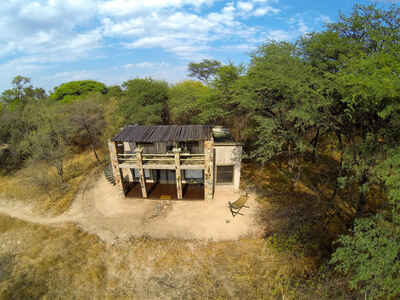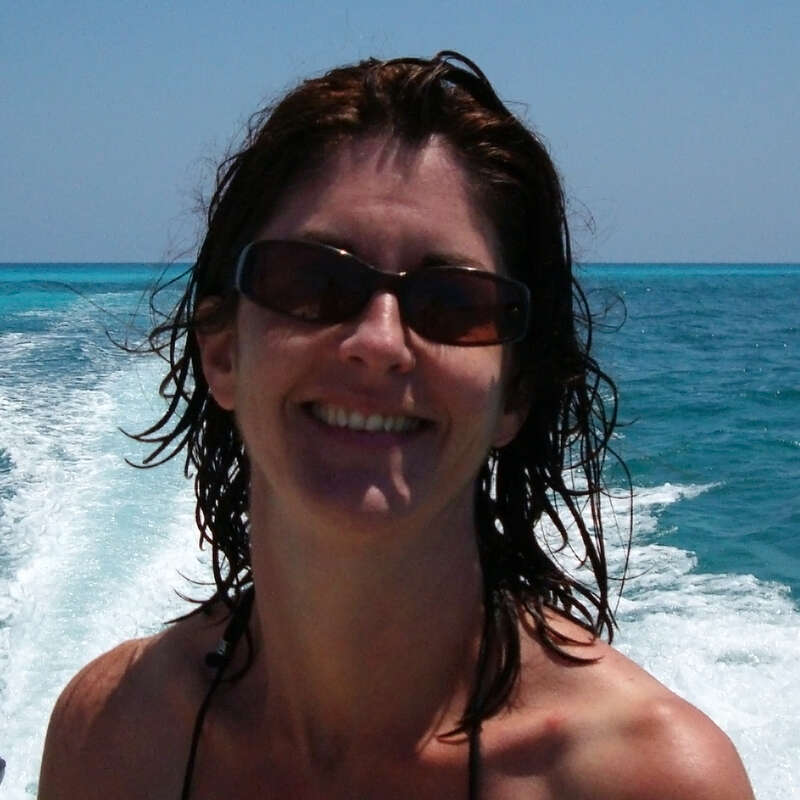About Camelthorn
Hidden in a forest of mature camelthorn trees, which soon gives way to open plains and a network of waterholes, ...
... Camelthorn Lodge is well situated for game viewing. It is set in a private concession outside the extreme south-east corner of Zimbabwe’s Hwange National Park, just a ten-minute drive from its own private gate into the park.
Camelthorn has a very solid structure, and though it's well designed, it certainly won't suit those looking for a bushcamp. The guiding team is very experienced and knowledgeable and the variety of activities is diverse. We particularly like the camp's unique sunken hide, and the opportunity to take part in a pump run where you will help with the upkeep of southern Hwange's waterholes.
Our view
Camelthorn has a very solid structure, and though it's well designed, it certainly won't suit those looking for a bushcamp. The guiding team is very experienced and knowledgeable and the variety of activities is diverse. We particularly like the camp's unique sunken hide, and the opportunity to take part in a pump run where you will help with the upkeep of southern Hwange's waterholes.
Accommodation
8 villas
Children
Best for aged 12+
Open
All year
Activities

4WD Safari

Birdwatching

Cultural excursion

Guided walking safari

Horse-riding

Night drive

Private activities
Traveller reviews of Camelthorn
3 real, un-edited reviews from Expert Africa's travellers.
Arrived 28 Oct 2017, 3 nights
"deserves its description as a "flagship lodge"
Overall rating: Excellent
Arrived 29 Sep 2015, 4 nights
"See elephants really close at Camelthorn"
Overall rating: Good
Arrived 7 Sep 2015, 4 nights
"Lions and elephants"
Overall rating: Excellent
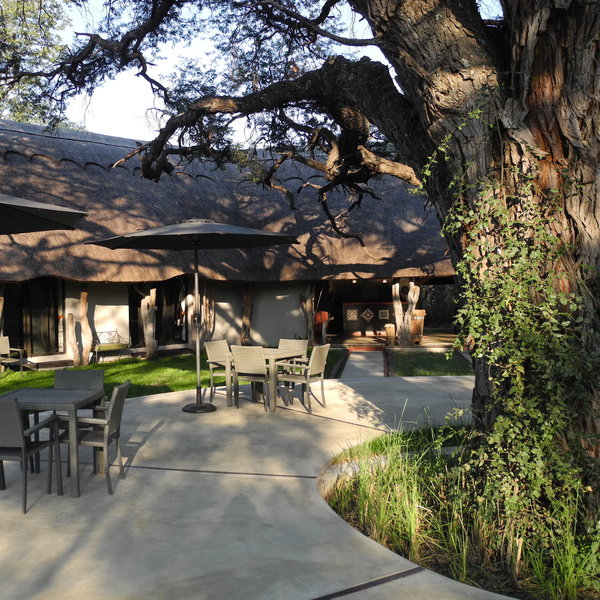
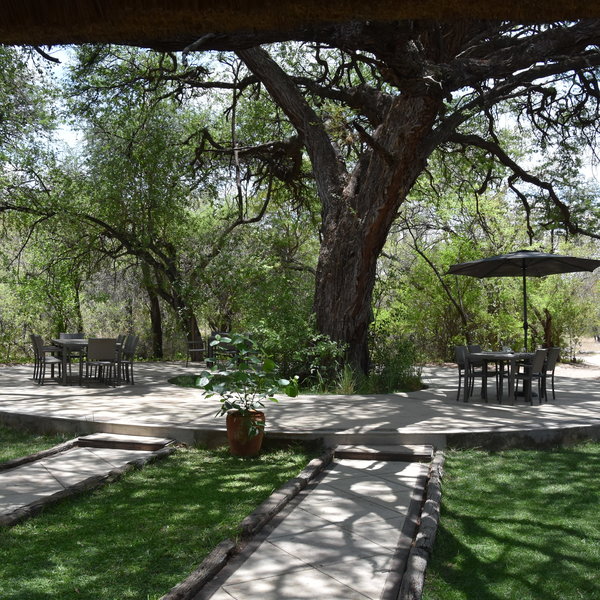
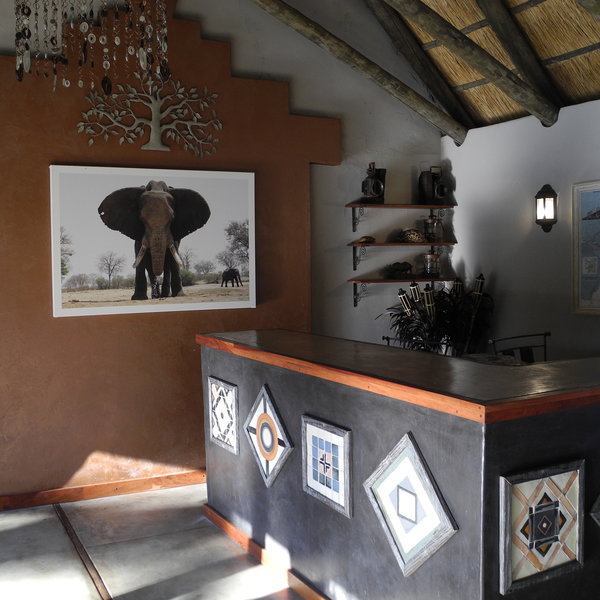
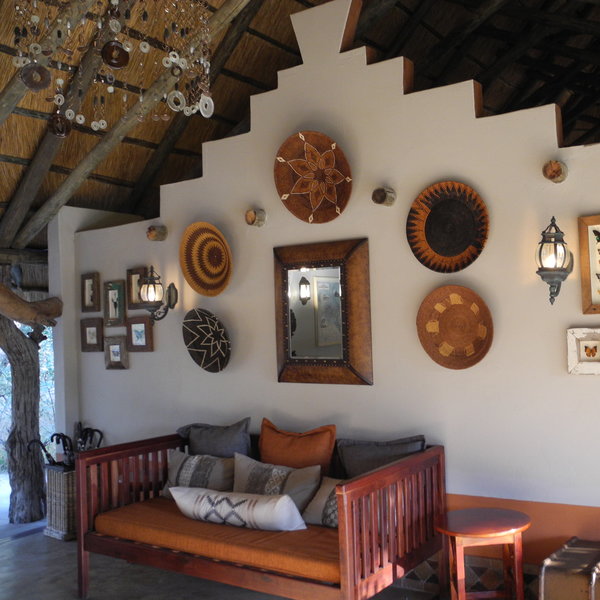
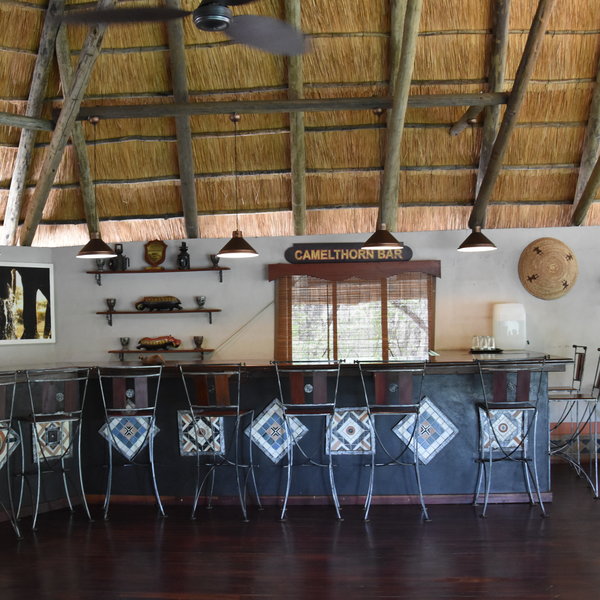
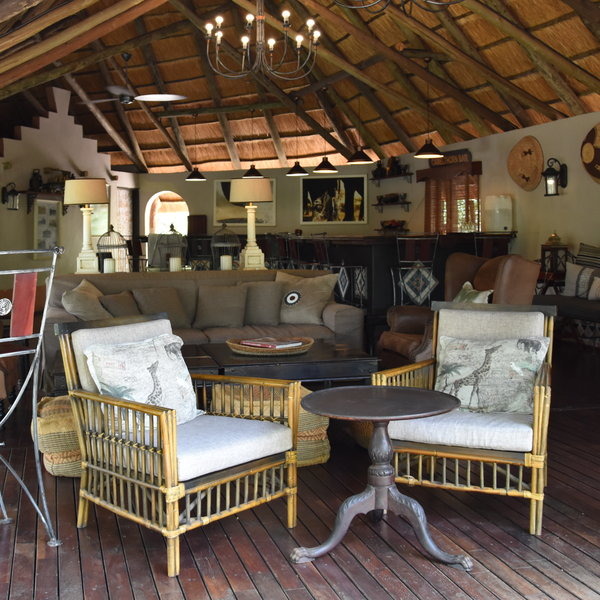
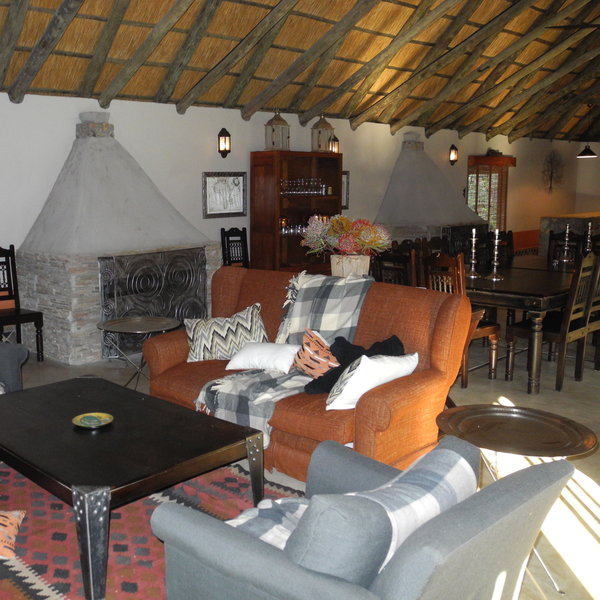
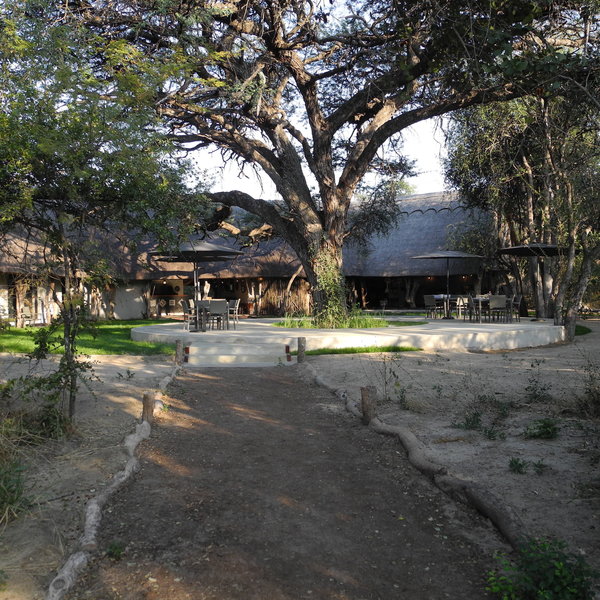
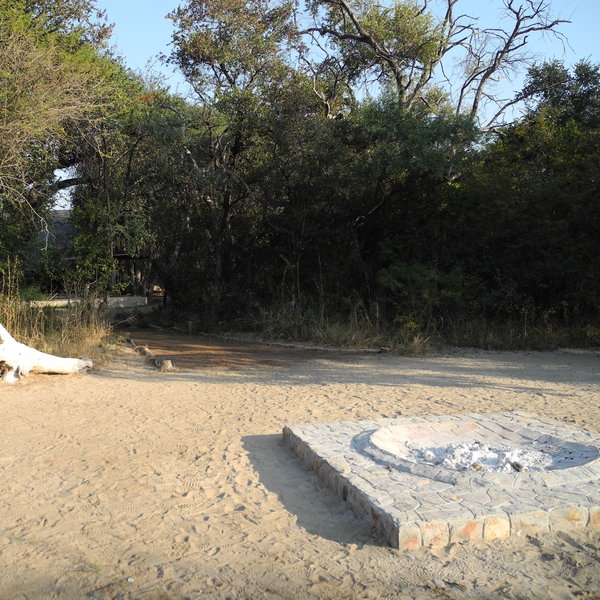
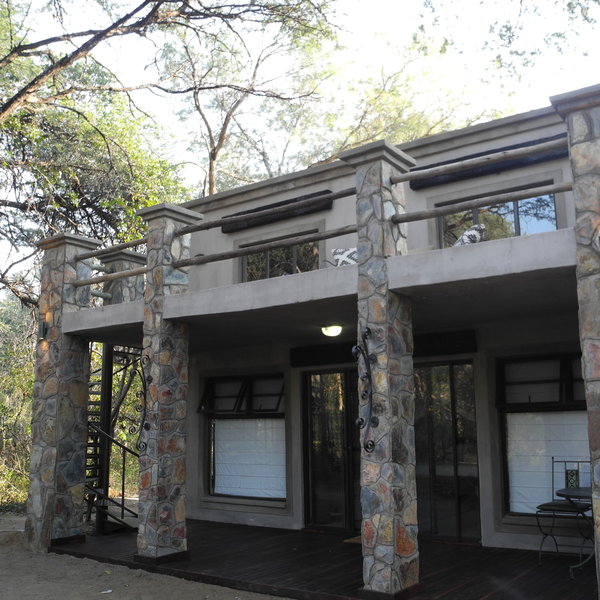
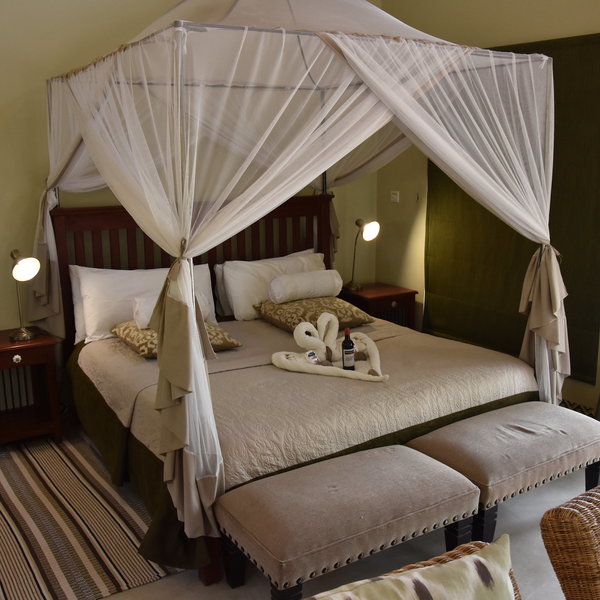
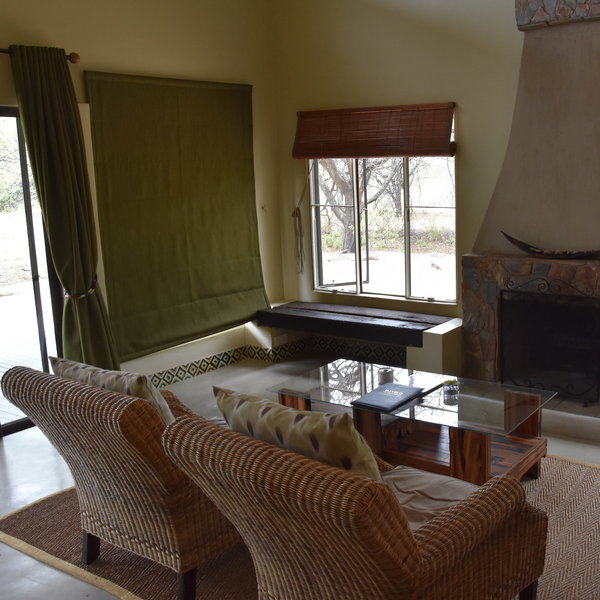
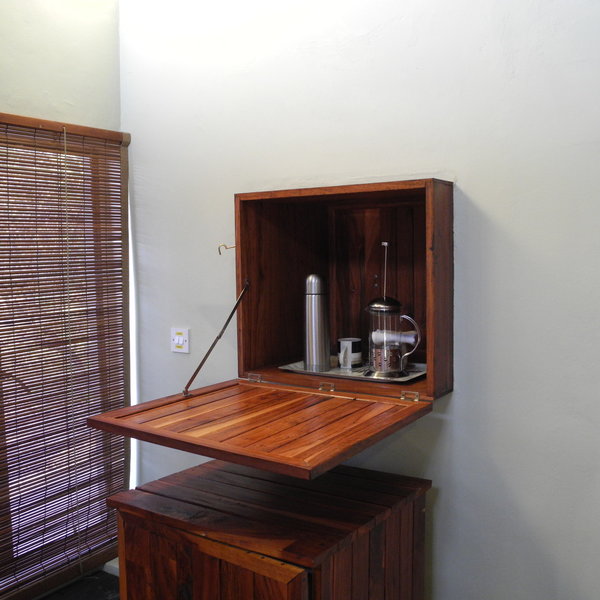
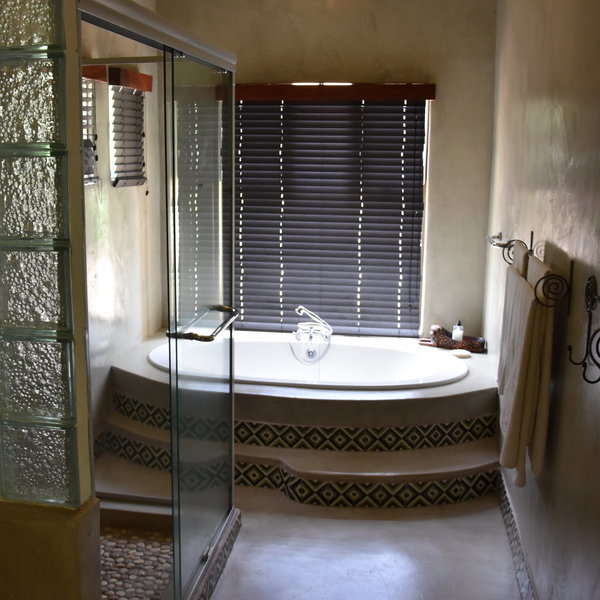
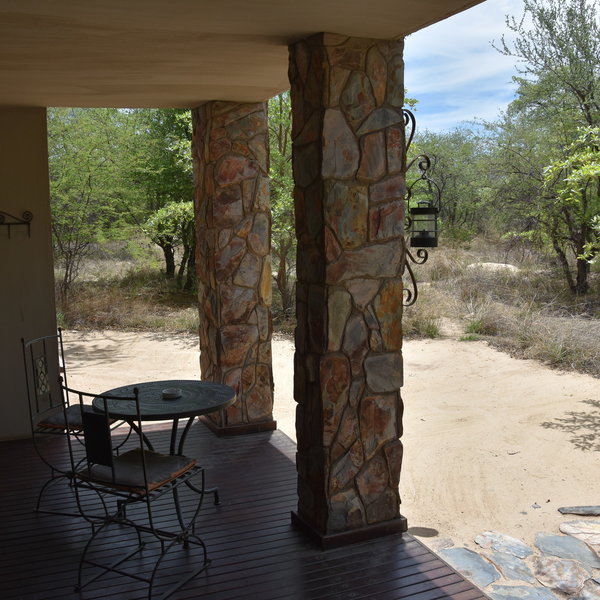
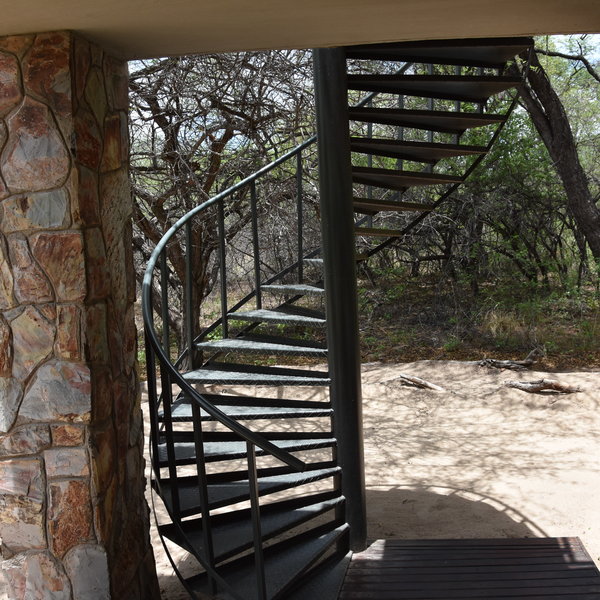
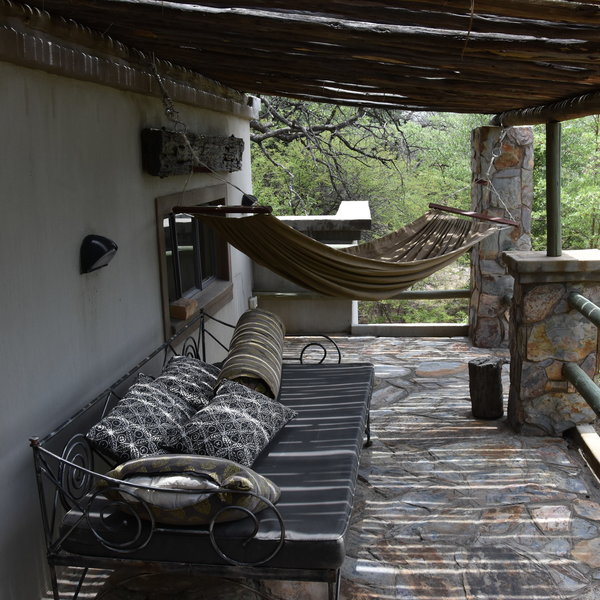
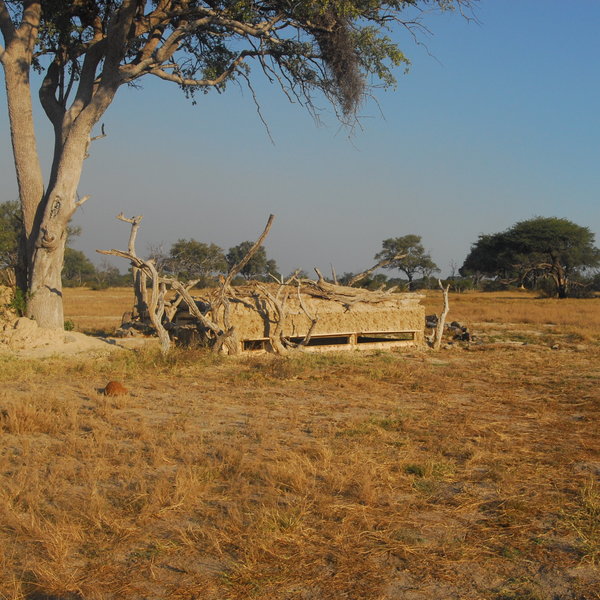
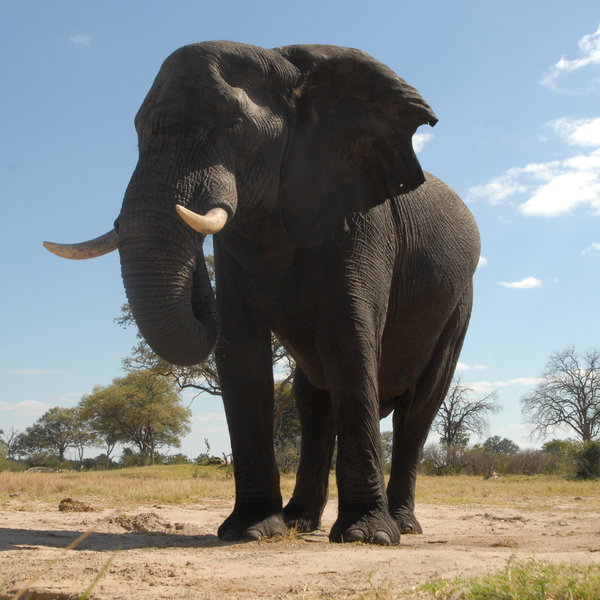

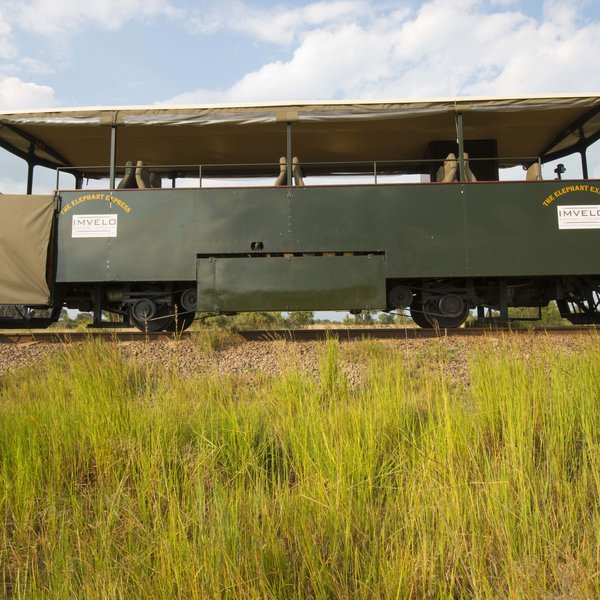
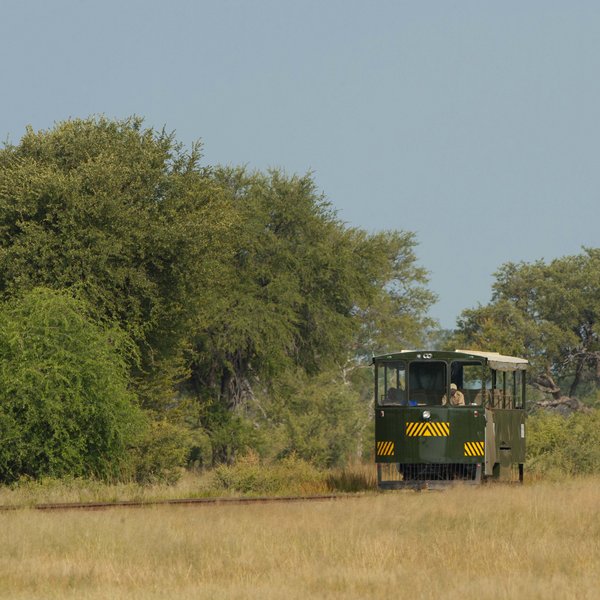
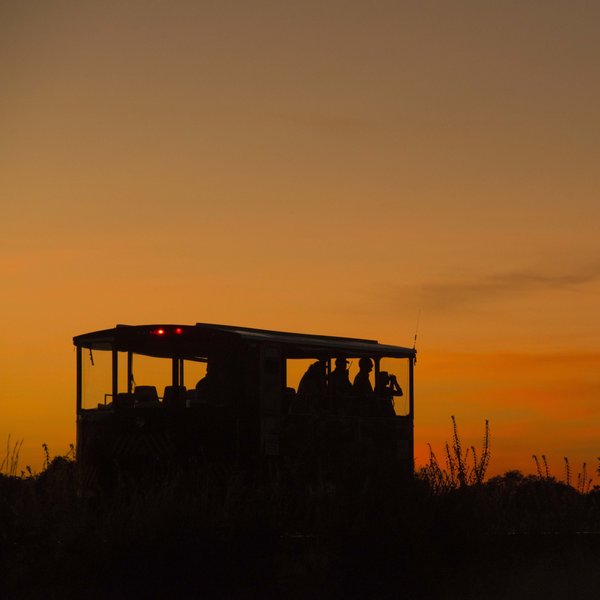
Expert Africa's gallery
When we travel we take lots of photos ourselves to give you a real and un-edited view of the safaris. See our 23 pictures and 1 videos of Camelthorn to get the candid view.
View galleryCamelthorn: Our full report
Hidden in a forest of mature camelthorn trees, which soon gives way to open plains and a network of waterholes, ...
... Camelthorn Lodge is well situated for game viewing. It is set in a private concession outside the extreme south-east corner of Zimbabwe’s Hwange National Park, just a ten-minute drive from its own private gate into the park.
Camelthorn, which opened in 2014, shares this concession with its sister lodge, Bomani Tented Lodge, although it is a rather more solid and upmarket prospect. A stay at Camelthorn would combine well with one of its other sister properties within the park itself: Jozibanini Camp and/or Nehimba Lodge.
Given the density of the forest it is surprising to discover that there are eight large forest villas at Camelthorn, each nestled into its own secluded setting, and well separated from the next by thick vegetation. The villas are constructed of concrete with mod-cons such as air conditioning that are often missing from safari camps – perhaps giving a nod to the lodge’s aspirations to luxury. Each villa is fronted by a patio, with a couple of iron chairs and a table. A spiral staircase leads up to a cool, shaded balcony where a comfy sofa/daybed is a perfect spot to relax.
Sliding glass and mesh doors open into the villas themselves, revealing a very spacious and comfortable space with high ceilings and plenty of windows letting in both the breeze and the light. A large fireplace helps to counter Hwange’s cold winter evenings, with further warmth and colour provided by decorative mats and carpets on the polished concrete floors and dark teak furniture. However on our last stay in November 2017 it was the AC that really came into its own cooling, the villa to a pleasant temperature in the heat of the afternoon.
As well as double or twin beds, each room has a couple of comfy chairs and a coffee table in front of the fireplace set with wildlife magazines. A further thoughtful touch is a wooden cubbyhole built into the wall, with doors both on the inside and outside of the villa. At the time of your morning wake-up call, tea, coffee and cookies will be placed here to help kick-start your day – with no fear of the birds or squirrels helping themselves first!
The villa's en-suite bathrooms are very stylish, their clean lines and rendered finish lending a modern feel. Along with a large shower with very good pressure and plenty of hot water, there’s an elevated bath, and his and hers washbasins. The toilet is in a separate room, with a lockable door for privacy. As at most top safari camps, complimentary toiletries are provided.
Overall the lodge has a very solid and permanent feel, no more so than in the main area, which is reached from the villas along a series of sandy pathways through the bush. The centrepiece here is the camp’s namesake: a large camelthorn tree, encircled by a platform dotted with tables. Meals are served al fresco under the tree, or in the large dining room housed within a crescent-shaped thatched building. This is also home to the bar and open-plan lounge area, with dark wood furniture and a few comfortable chairs.
Perhaps surprisingly, given its remote feel, Camelthorn is situated just next to the Bulawayo–Victoria Falls railway line, which acts as the boundary between Hwange National Park and the adjacent communal lands – and which explains the subtle railway theme to the lodge. This is most noticeable in the bar where black-and-white historical photographs of Zimbabwean locomotives adorn the walls, along with a few old maps and some fantastic shots of the local elephant population.
As for the railway itself, there is precious little rolling stock moving up or down to disturb the stillness nowadays, but it comes into its own for Camelthorn's Elephant Express, a purpose-built rail-carriage designed to transfer guests from Hwange Town to Ngamo Siding, not far from camp. On one stay we were able to leave the park using this restored tram, which has been built with a high attention to detail; we particularly liked the teak tables and the elephant-head handrails. The Elephant Express makes an unusual and rewarding means of getting to and from Hwange, and works even better in combination with the overnight Stimela Star rail service between Victoria Falls and Dete.
High-quality guiding teams mark out both Camelthorn and its sister camp, Bomani. At Camelthorn in particular, head guide Sibs Sibanda brings an enormous amount of experience to the role, as well as being a very personable and courteous host.
These teams lead all activities at the camp, including 4WD and walking safaris in Hwange National Park, which is reached through a dedicated gate across the railway line. At this point, the thick vegetation soon gives way to the more open Ngamo Plains, where a network of pumped waterholes means that wildlife viewing is generally very good, but especially during the dry season (July to around October).
To make the most of the wildlife, the team at Camelthorn have created an original “look-up hide”, made from a sunken shipping container that's been modified to include narrow blinds, enabling those inside to look out onto the waterhole from ground level. Added to this is a clever system of pumped troughs next to the main pan which, by allowing different troughs to be filled depending on the time of day, affords the opportunity to photograph elephants in the best light.
Camelthorn also offers guests the chance to engage in their “pump-run”. Pumps at all the artificial waterholes in Hwange National Park require maintenance, but in recent years, many have fallen into disrepair, and as a result the surrounding game has all but disappeared. In this southerly region of the park, Camelthorn has not only taken on the maintenance and upkeep of these pumps, it has turned it into an activity in which guests can participate. A full day is spent travelling by vehicle from pump to pump, spotting wildlife with your guide along the way and taking in a visit to a local school and village. This is a great opportunity not only to get into a more remote area of the national park, but also to contribute in a tangible way to the upkeep of its vital waterholes.
Activities
4WD Safari
Birdwatching
Cultural excursion
Guided walking safari
Horse-riding
Night drive
Private activities
Families & children
- Attitude towards children
- Camelthorn accepts children of all ages, but children under the age of seven are only allowed by special arrangement, and may be subject to restrictions such as private dining, and having to book a private vehicle.
- Property’s age restrictions
- Normally no children under 7 years
- Special activities & services
- There are no special activities and services for children provided by the camp.
- Equipment
- There is no specialist equipment for children at Camelthorn.
- Generally recommended for children
- There is quite a mature feel to Camelthorn. The lack of a swimming pool or any other amenities that would appeal to children may also mean this isn't the best camp for a family safari. We would recommend this camp for older children and teenagers rather than anyone still in single figures.
- Notes
- Although the tick bush around camp mitigates the chances of seeming the most dangerous wildlife here it isn’t impossible. As the lodge is unfenced we would recommend adult supervision of children at all times.
Food & drink
- Usual board basis
- Full Board & Activities
- Food quality
- On our last visit to Camelthorn in November 2017, as on previous visits, we were impressed by the standard of cuisine, and we certainly felt well fed throughout our stay.
The day begins with an early breakfast around the campfire. There was a simple but varied spread of yoghurt, toast, cereal and fruit, accompanied by tea, coffee, and fruit juice. Cooked options are also available, with bacon, sausages, tomatoes, and eggs prepared to order.
On return to camp, lunch is served, which for us was a tasty and filling spiced tomato and mushroom chicken, served with salad and pesto pasta.
Before departing on our afternoon activity, we were too slow to the table so missed out on the cake at high tea, but during the afternoon game drive there is usually a stop for some drinks as the sun sets, accompanied by some nibbles although this is flexible and if a wildlife sighting is particularly good then this stop may be missed.
Dinner is usually three courses, although occasionally a South African style braai (barbecue) is put on. On our last visit we were treated to a curried squash tart to start. A generous portion of beef medallions with roast potatoes and seasonal vegetables followed, then for dessert we just about had space left to enjoy a peach and custard sponge. - Dining style
- Group Meals
- Dining locations
- Indoor and Outdoor Dining
- Further dining info, including room service
- Room service is not available
- Drinks included
- Bottled water, soft drinks, local beers and spirits, and a selection of South African red and white wines are included. Champagne and imported wines and spirits will cost extra and may need to be requested in advance.
Getting there
- Location
- Hwange National Park, Zimbabwe
- Ideal length of stay
- We'd recommend a stay of three or perhaps four nights at Camelthorn. It's remote so takes a little longer to get to than many other Hwange properties, and there's plenty to keep guests entertained on arrival.
- Directions
- Most guests to Camelthorn arrive by road, usually from Victoria Falls or Bulawayo, via Halfway House. This small service station acts as a staging post on the main road between Victoria Falls and Bulawayo, and is where guests will meet their guide before continuing onto camp – a drive of a couple of hours.
Another option is for guests to transfer by road or perhaps rail by way of the Stimela Star to Hwange Town where they board the Elephant Express for the Ngamo Siding, where a game-drive vehicle will be waiting to drive them to camp.
The Express is not recommended for guests with an onward flight connection to catch, but even fly-in guests can still enjoy “game drives” up and down the line on this novel feature. - Accessible by
- Fly-and-Transfer
Special interests
- Photography safaris
- For guests looking to get shots of elephants on a photographic safari in Zimbabwe, Camelthorn's “look up hide” gives great angles for up-close and personal photographic opportunities.
- See ideas for Photography safaris in Zimbabwe
- Riding safaris
- Camelthorn is one of the few properties in Zimabwbe that offers riding. Explore the open grasslands of Hawange's Ngamo Plain with guides and horses for all experinace levels.
- See ideas for Riding safaris in Zimbabwe
Sustainability
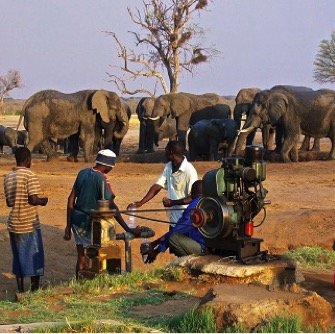
A source for clean water
Camelthorn is located at one of the last remaining well-protected and un-spoilt acacia woodlands in the Hwange National Park. Operating in the only ‘Africa’s Great Parks’ without any major rivers has turned the lodge into a leading example for its water supply programme.
Unfortunately, last year more than 500 Zimbabweans sadly died due to waterborne diseases as a result of a lack of clean water supply. Camelthorn Lodge is working hard to address this issue having already installed 25 village wells and taken over the maintenance of 27 others. This helps provide safe water to many families across the local Tsholotsho community, as well as support wildlife in the area - particularly elephants. The lodge is currently looking after approximately 20- 25% of the waterholes that sustain Hwange's wildlife. Annually, Camelthorn Lodge, through its mother company, spends over $150,000 to operate the water supply initiative. The money is used to supply diesel for engines, oils and filters, and also pay the wages and rations of locals who man the pumps.
During the dry season, guests are encouraged to contribute their efforts to maintaining the pumps. They are invited to visit the waterholes to drop off fuel for the motors as well as rations and supplies for the pump attendants. Tourists can end their pump run with sundowners at one of the waterholes close to the camp before going back to their villa dotted with a small water hole aimed at attracting animals, making the lodge a great location for wildlife photography.
See more great sustainability projects in Zimbabwe
Communications
- Power supply notes
- Camelthorn's generator runs during peak times: in the mornings, at lunchtime and in the evenings. Once all guests have gone to bed, the generator is switched off but each chalet has lights supported by a battery, so you will rarely notice any difference from the camp being on mains electricity.
- Communications
- There is cellphone signal and limited WiFi at Camelthorn.
- TV & radio
- There is no TV or radio at Camelthorn.
- Water supply
- Borehole
- Water supply notes
- Each chalet at Camelthorn has an ample supply of water. The showers are plumbed and the toilets are flushing.
Health & safety
- Malarial protection recommended
- Yes
- Medical care
- The guides at Camelthorn are all first-aid trained and there is a doctor in Hwange Town. Medical Air Rescue Service (MARS) is available should evacuation from camp be deemed necessary.
- Dangerous animals
- High Risk
- Security measures
- A nightwatchman patrols the camp. There is an electronic safe in each villa to store valuables.
- Fire safety
- There are fire extinguishers placed around camp.
Useful info
- Disabled access
- Not Possible
- Laundry facilities
- A full laundry service is included, except for underwear, for which washing powder is provided in the bathrooms.
- Money
- No exchange facilities are offered. There is an electronic safe in each villa to store valuables.
- Accepted payment on location
- Cash payments may be made in South African rand, US dollars, pounds sterling, euros and Botswana pula. There are no card facilities at Camelthorn.
Plan and book your trip with Expert Africa
All of our trips are tailor-made, so we'll always adapt them to suit you. Talk to an Expert and let us plan and arrange your perfect trip.

Talk to an Expert
Call or email us now! We’ll match you with the Specialist in our team who is best suited to help you. Then together we can start planning your trip.

Set up your itinerary
Based on our experience and your ideas, your specialist will create a detailed, costed itinerary. We’ll refine it together, until we have a trip that you’re perfectly happy with.

Prepare for your trip
The same Specialist will make the seamless arrangements for your trip, send you detailed travel documents, and be available to answer any questions before you depart.

Travel with peace of mind
After you set off, you’ll be cared for by our partners in Africa, most of whom have worked with Expert Africa for decades. And if you ever need us urgently, we’re available 24/7.

When you return
We love to learn about your trip, and so will always be grateful if you’ve the time to give feedback to your Specialist when you return.
Camelthorn's location
Look closer at the environment and surroundings of Camelthorn.
Other lodges in Hwange National Park
Alternative places to stay in this same area.
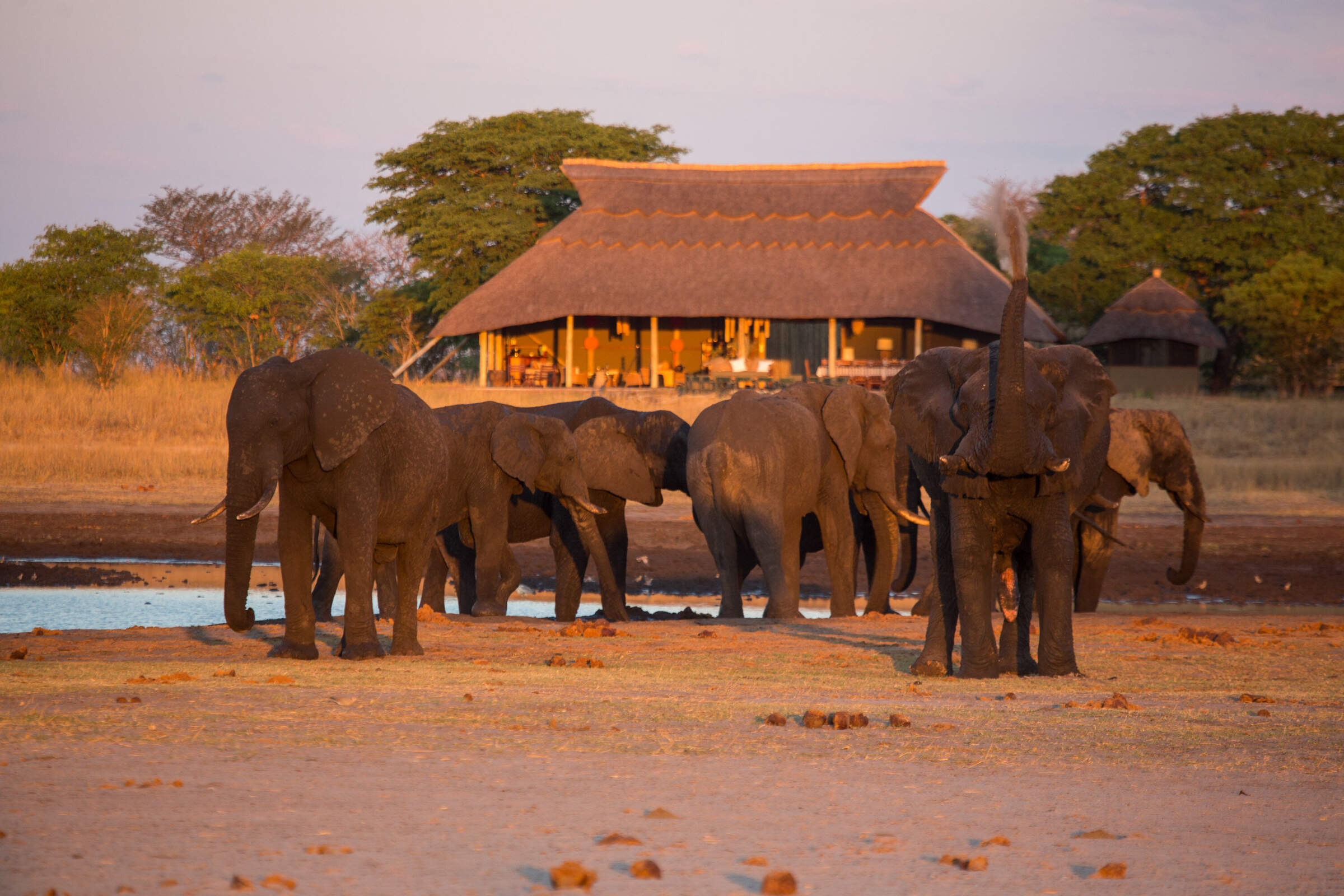
Camp Hwange
Overlooking a waterhole in a remote part of Hwange National Park, Camp Hwange offers great guiding in a pristine wilderness at reasonable prices.
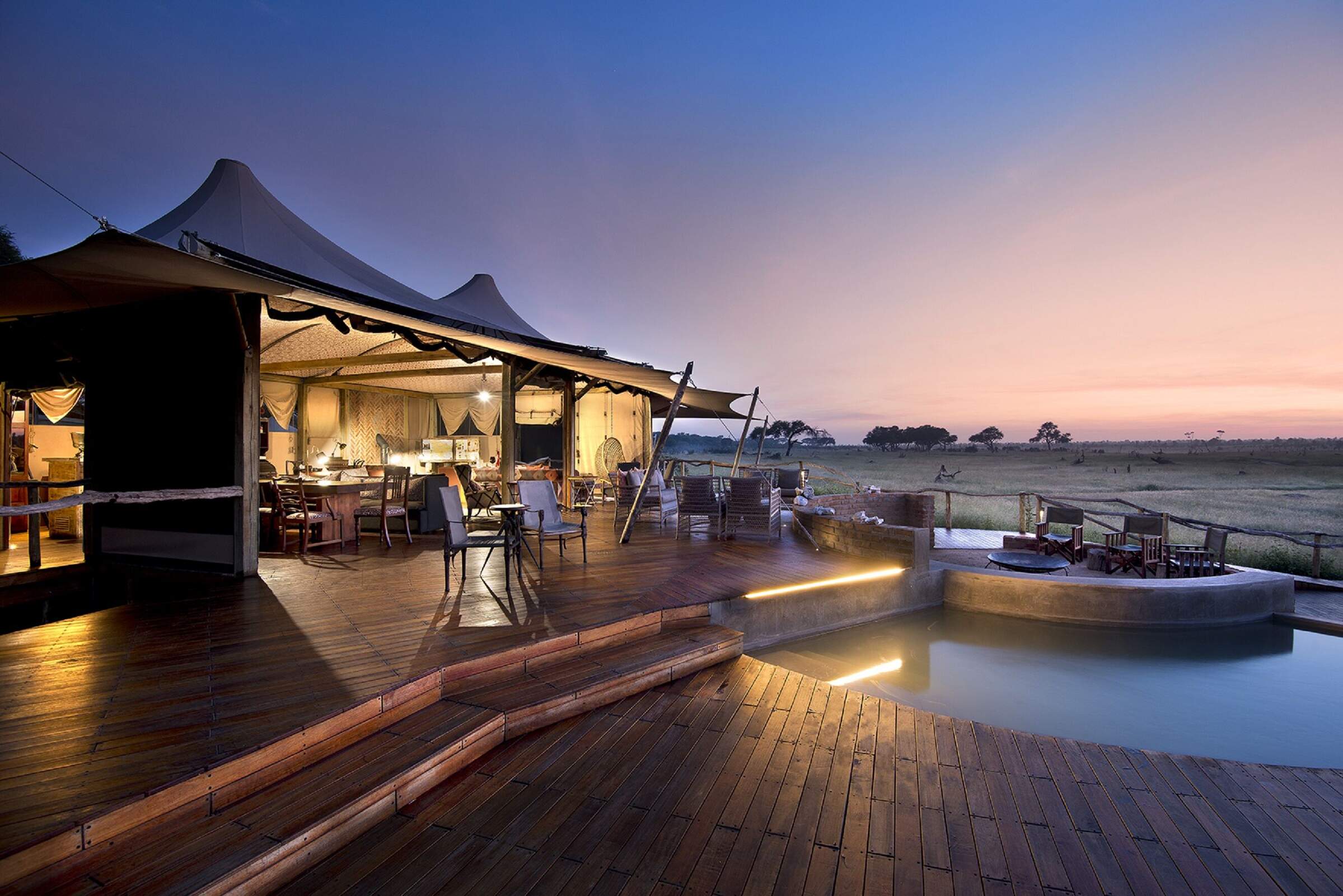
Somalisa Camp
Somalisa is a luxurious, yet remote, safari camp in Hwange National Park, offering walking safaris and game drives.
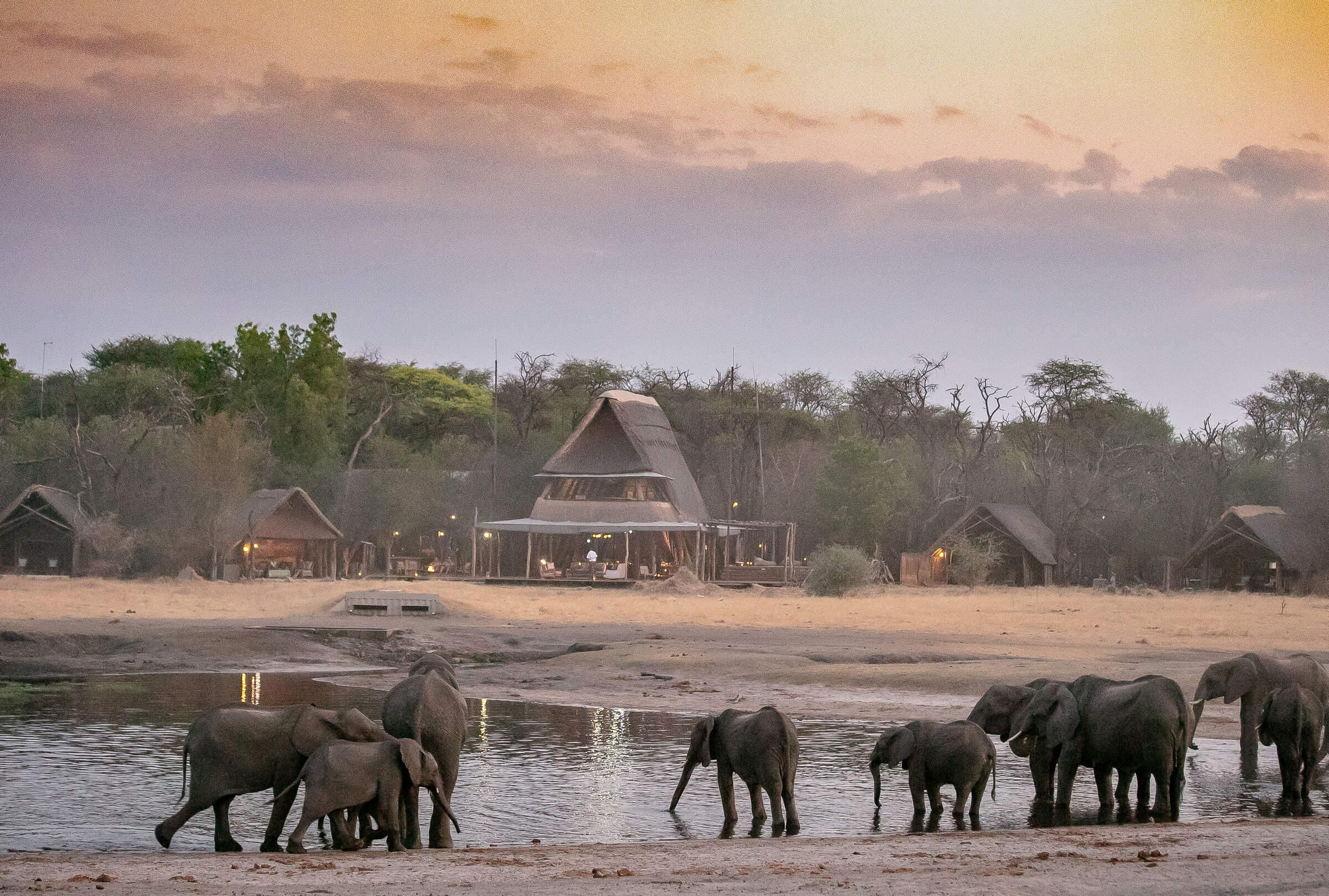
The Hide
Located in a small, private concession, The Hide is a relaxed and comfortable camp offering submerged hides and great family accommodation.
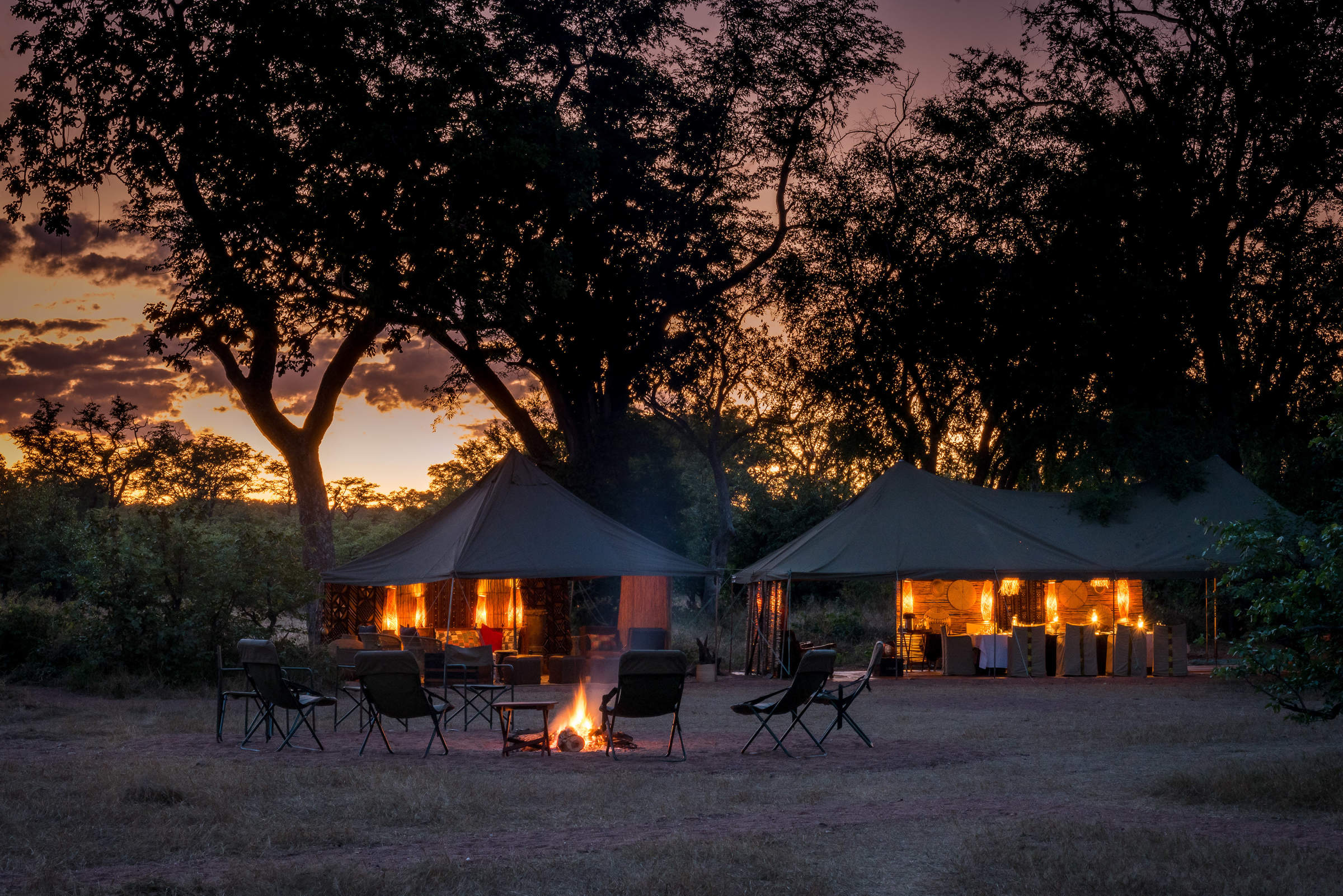
Hwange Bush Camp
Hwange Bush Camp is a small seasonal camp offering comfortable tents, great food, and superb guiding, and is often used by exclusive groups.
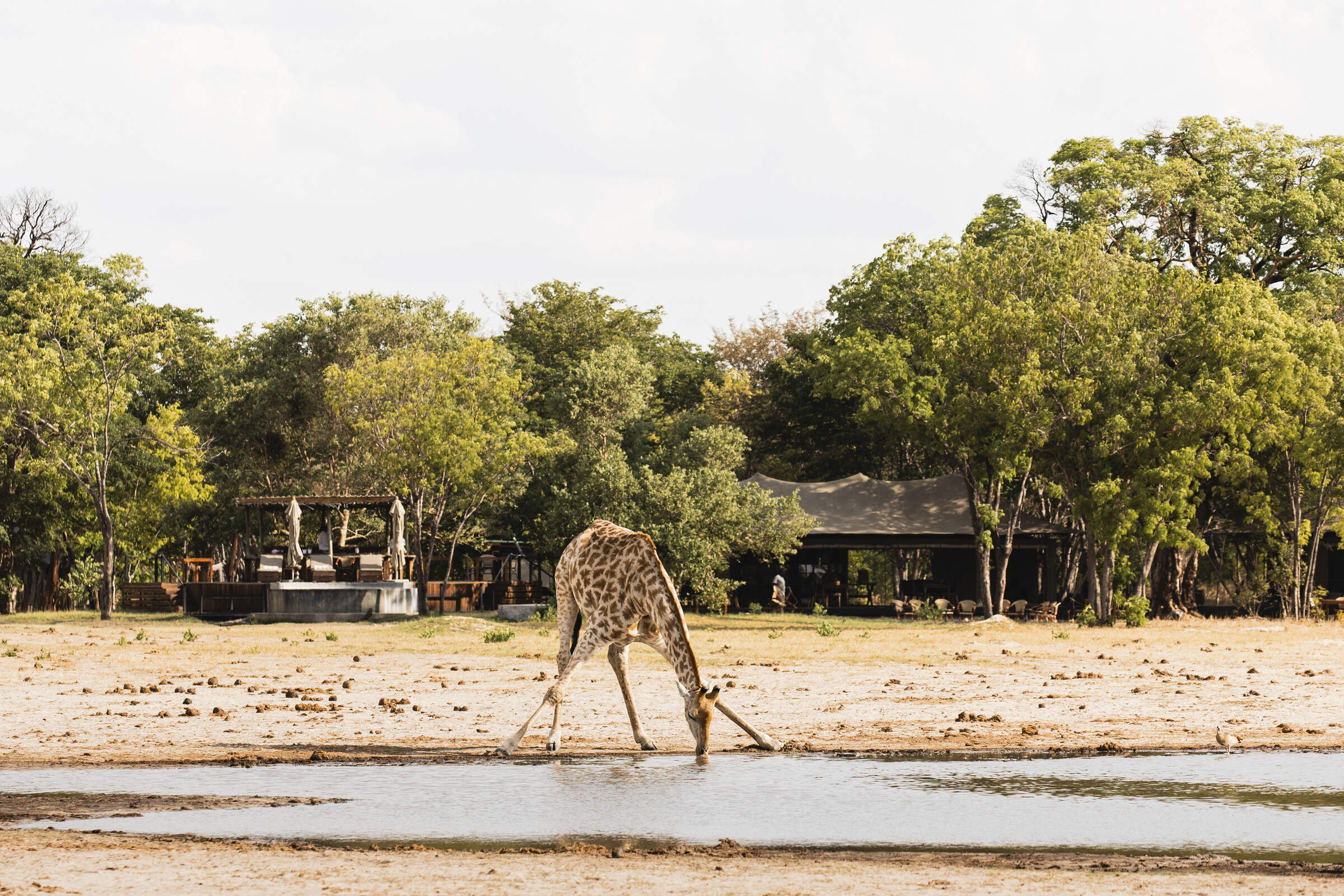
Little Makalolo Camp
Tucked away in Hwange National Park overlooking a waterhole, Little Makalolo Camp combines top guiding with excellent wildlife watching.
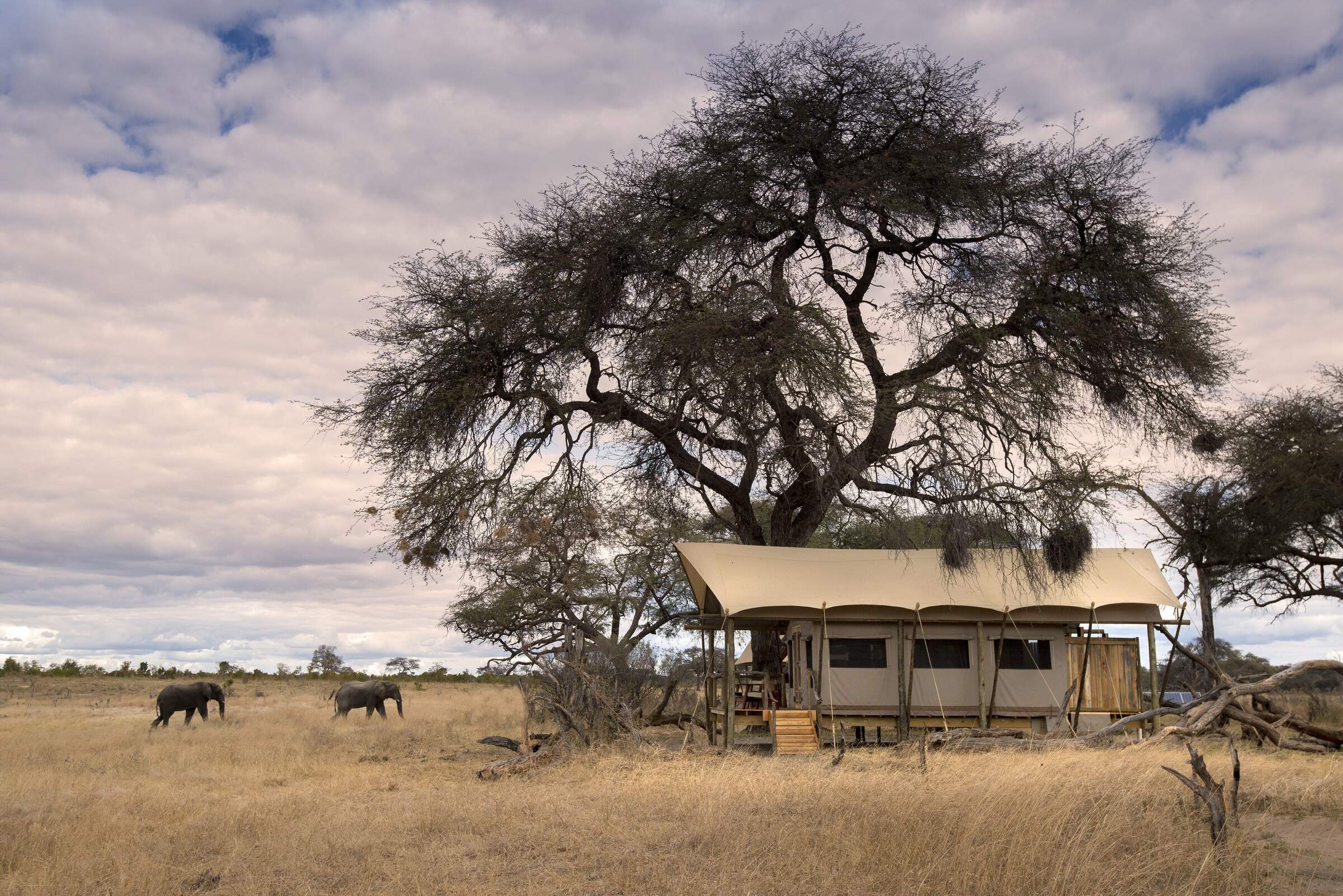
Somalisa Expeditions
A simple but stylish camp, Somalisa Expeditions sits in the heart of Hwange National Park, offering walking safaris and game drives.
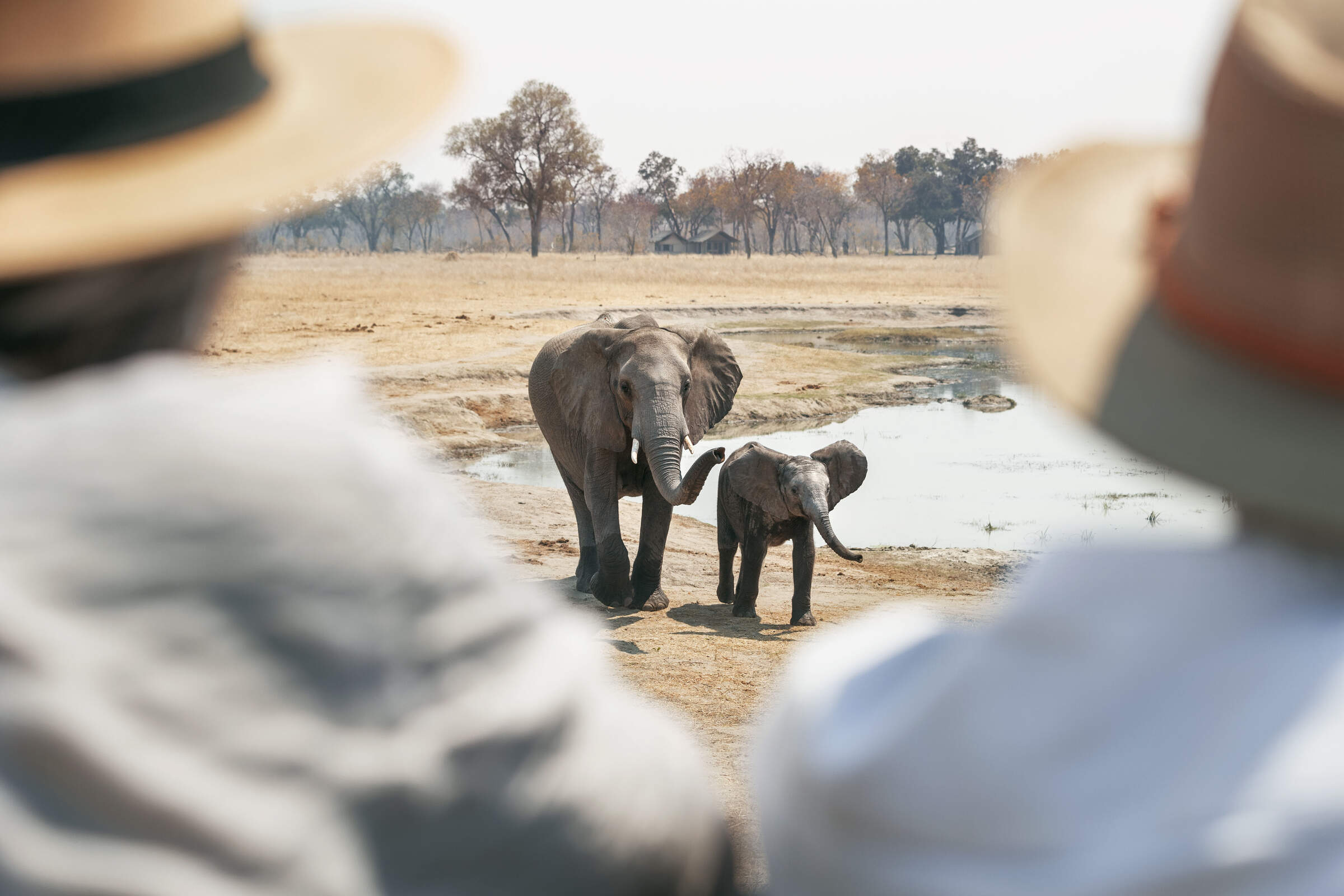
Davison's Camp
Within the Linkwasha Concession, Davison's Camp offers superb value for money, morning walking safaris and spot-lit drives after dark.
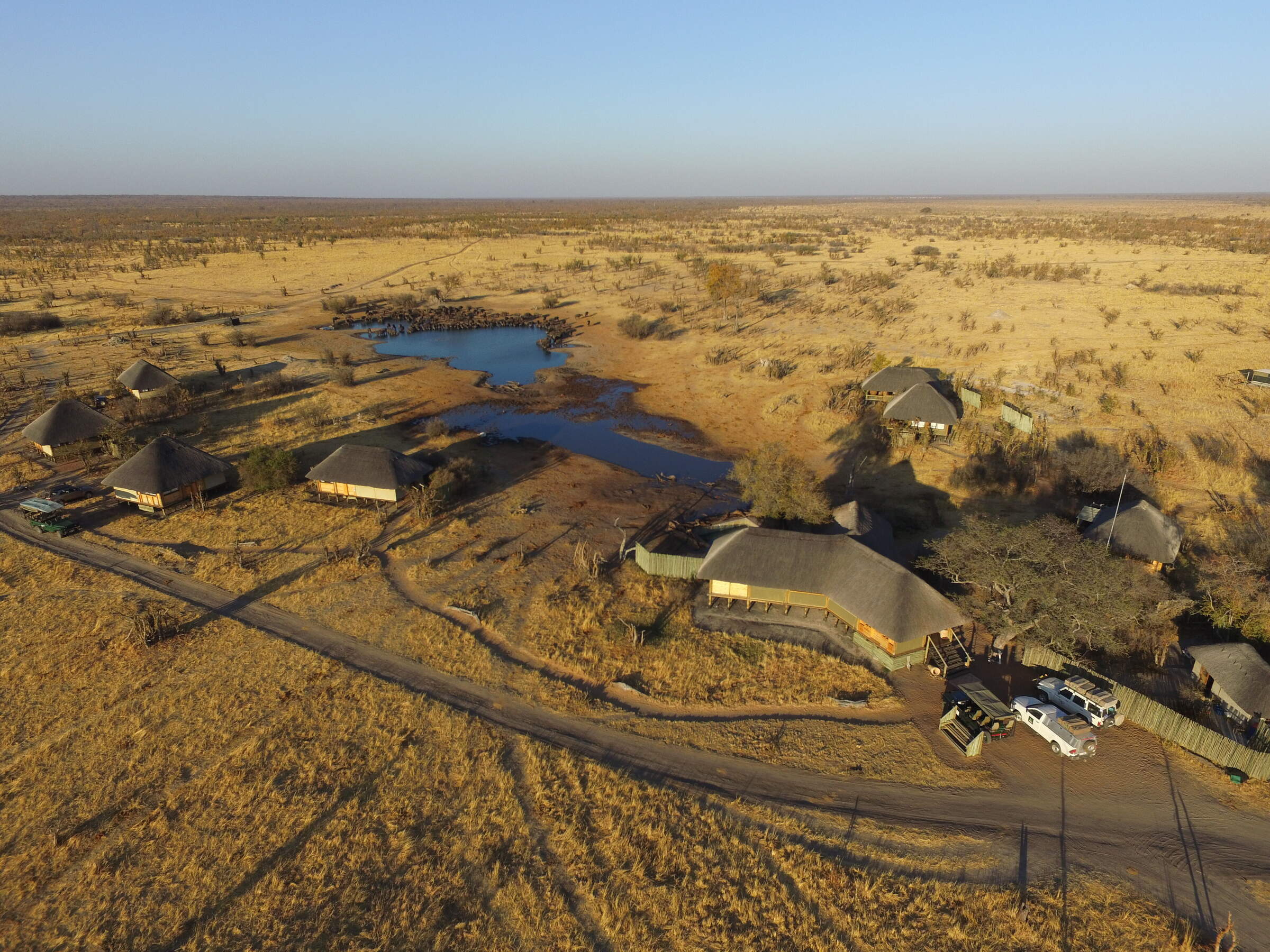
Nehimba Lodge
Nehimba is a comfortable, good-value camp in a remote area of Hwange National Park, teeming with wildlife.
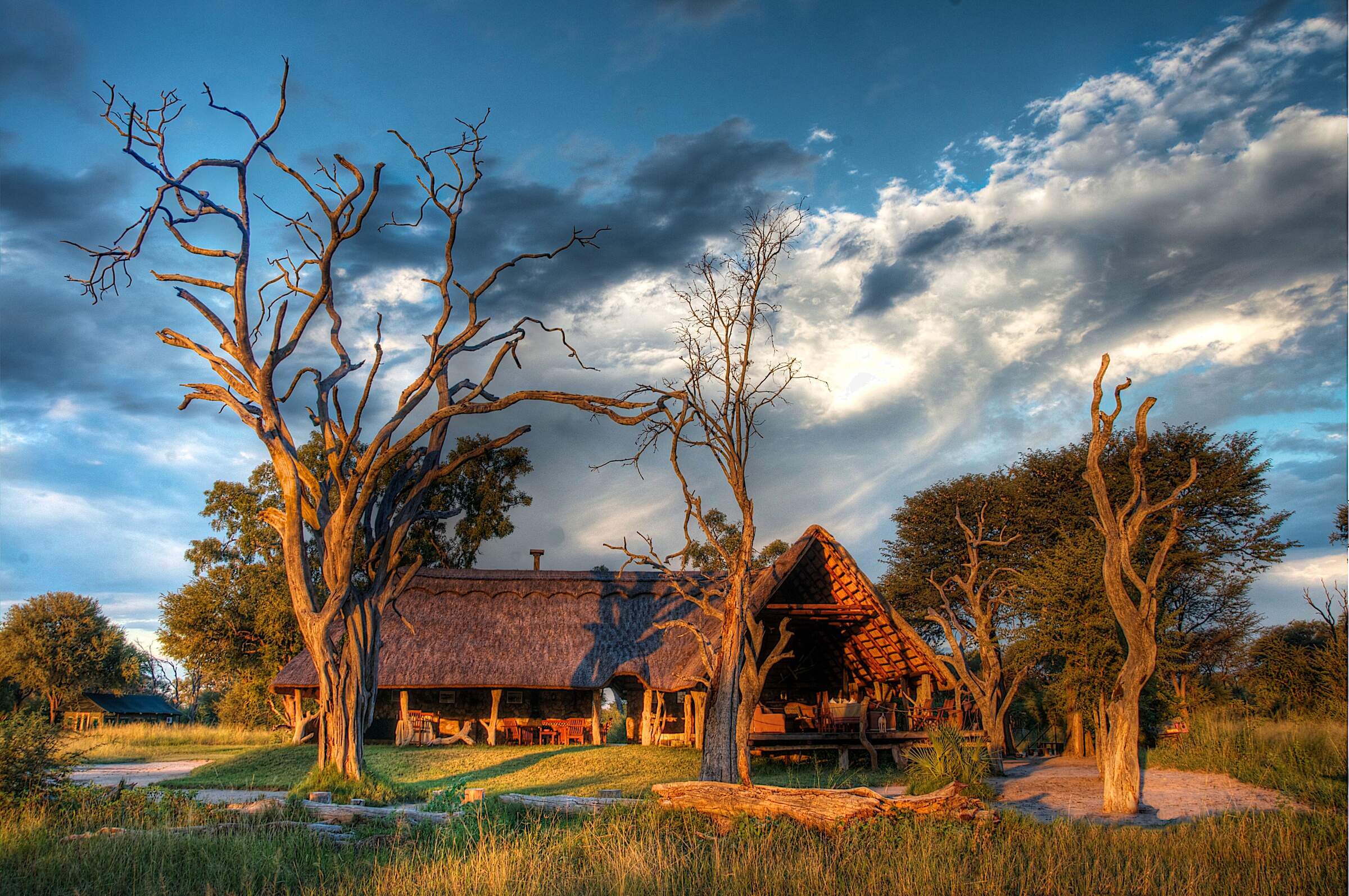
Bomani Tented Lodge
Bomani is a down-to-earth lodge with a range of activities in a remote region of western Zimbabwe, adjacent to Hwange National Park.
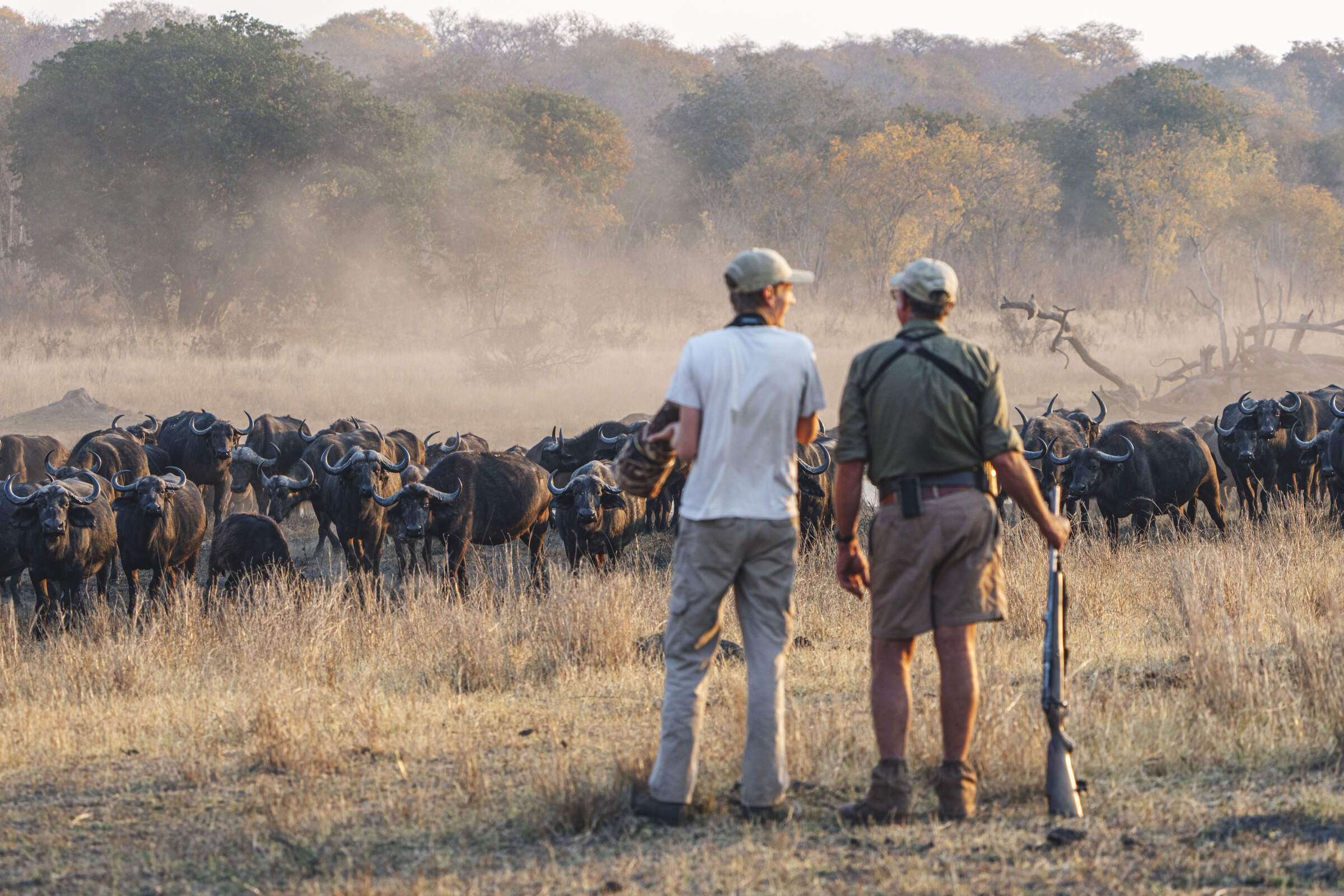
Khulu Bush Camp
Just outside Hwange National Park, Khulu Bush Camp features a waterhole popular with wildlife, especially elephants and offers excellent value for money.
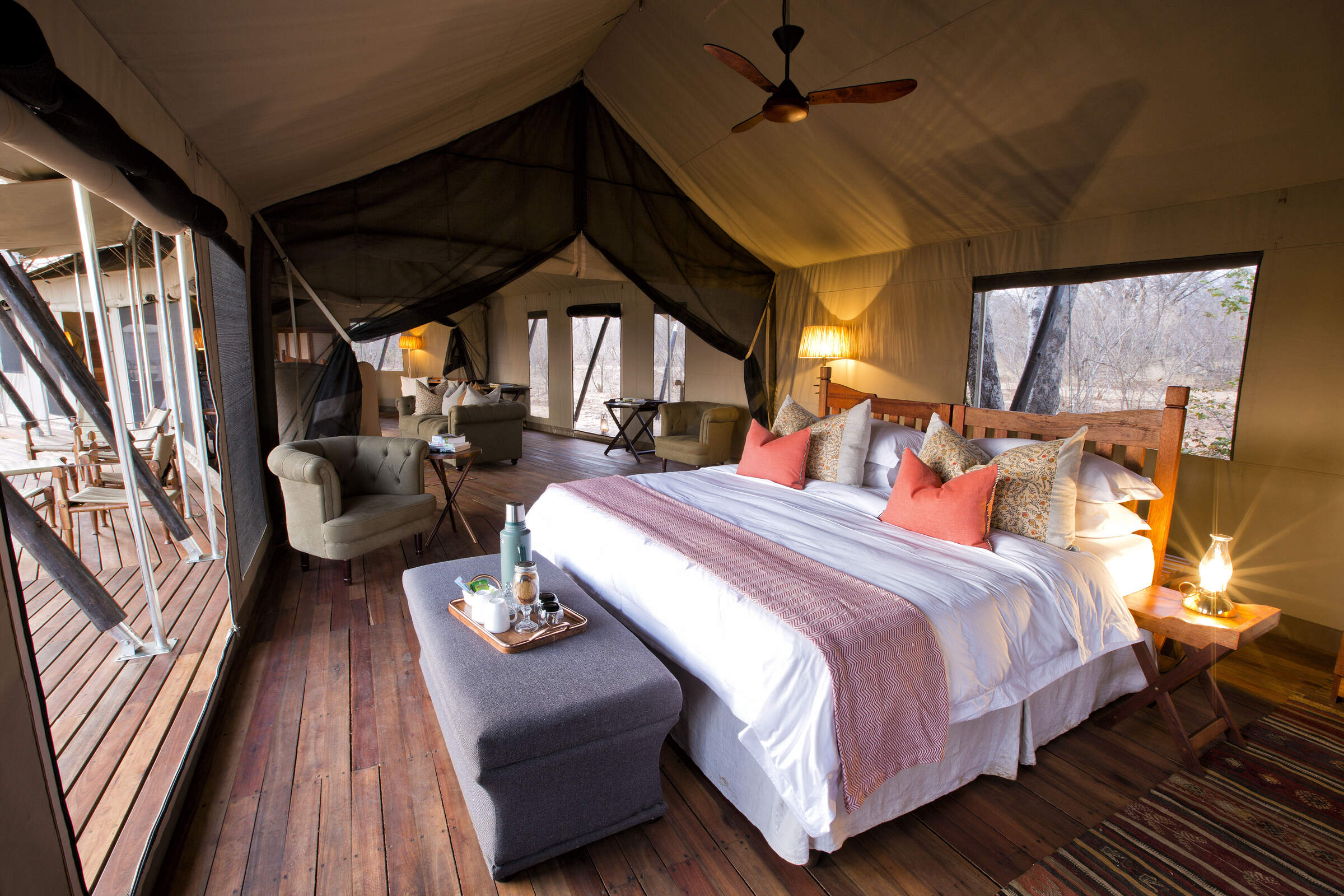
Verney's Camp
Verney's Camp is one of the newest offerings in Hwange, located in the wildlife rich, open landscape in the south-eastern section of the park.
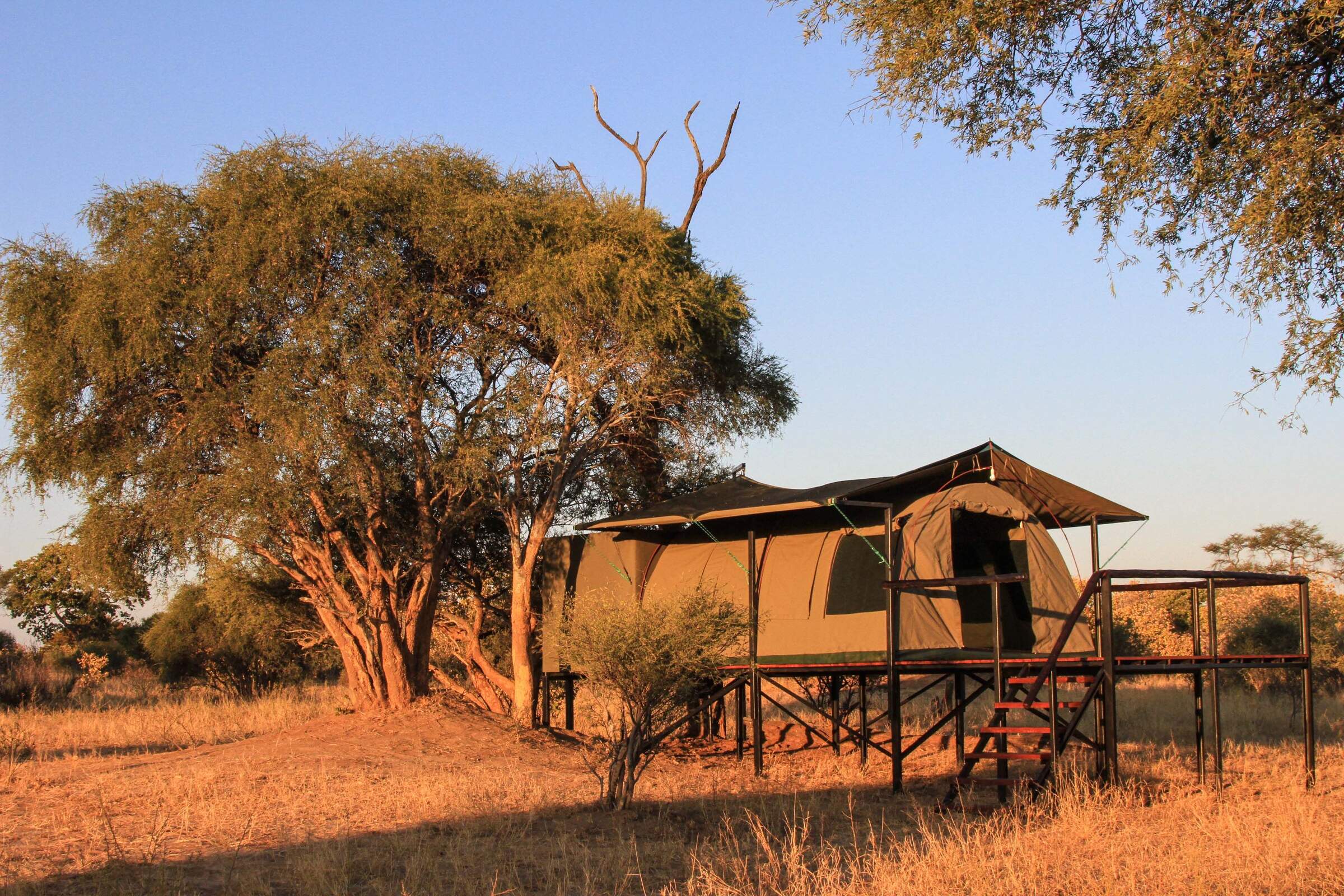
Jozibanini Camp
Remote and rugged, Jozibanini is one of the most remote camps in Zimabwe's largest National Park. Stay here for a real wilderness experience.
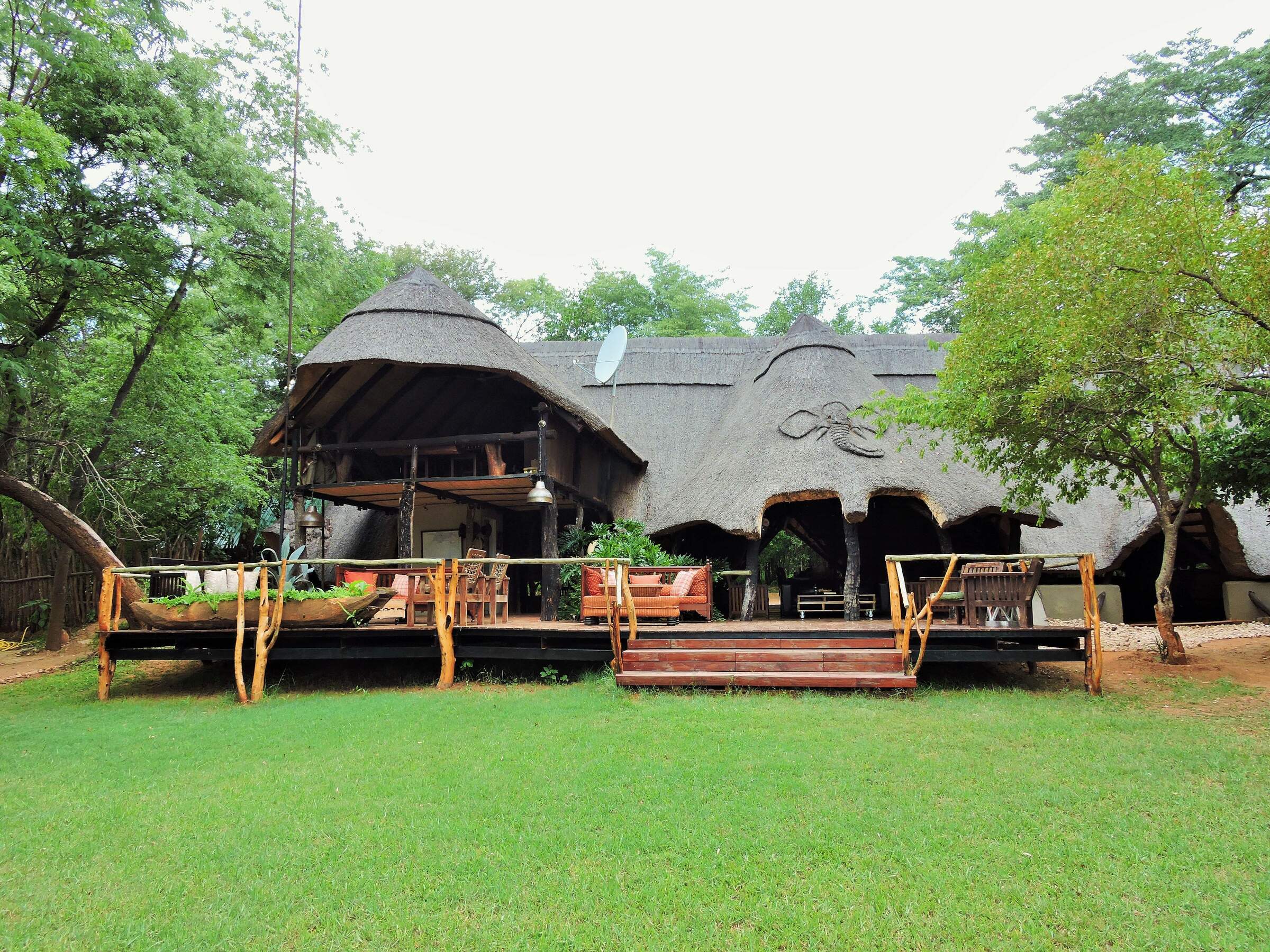
Ivory Lodge
Just outside Hwange National Park, the small Ivory Lodge is a great place to see large herds of elephant as well as smaller plains game.
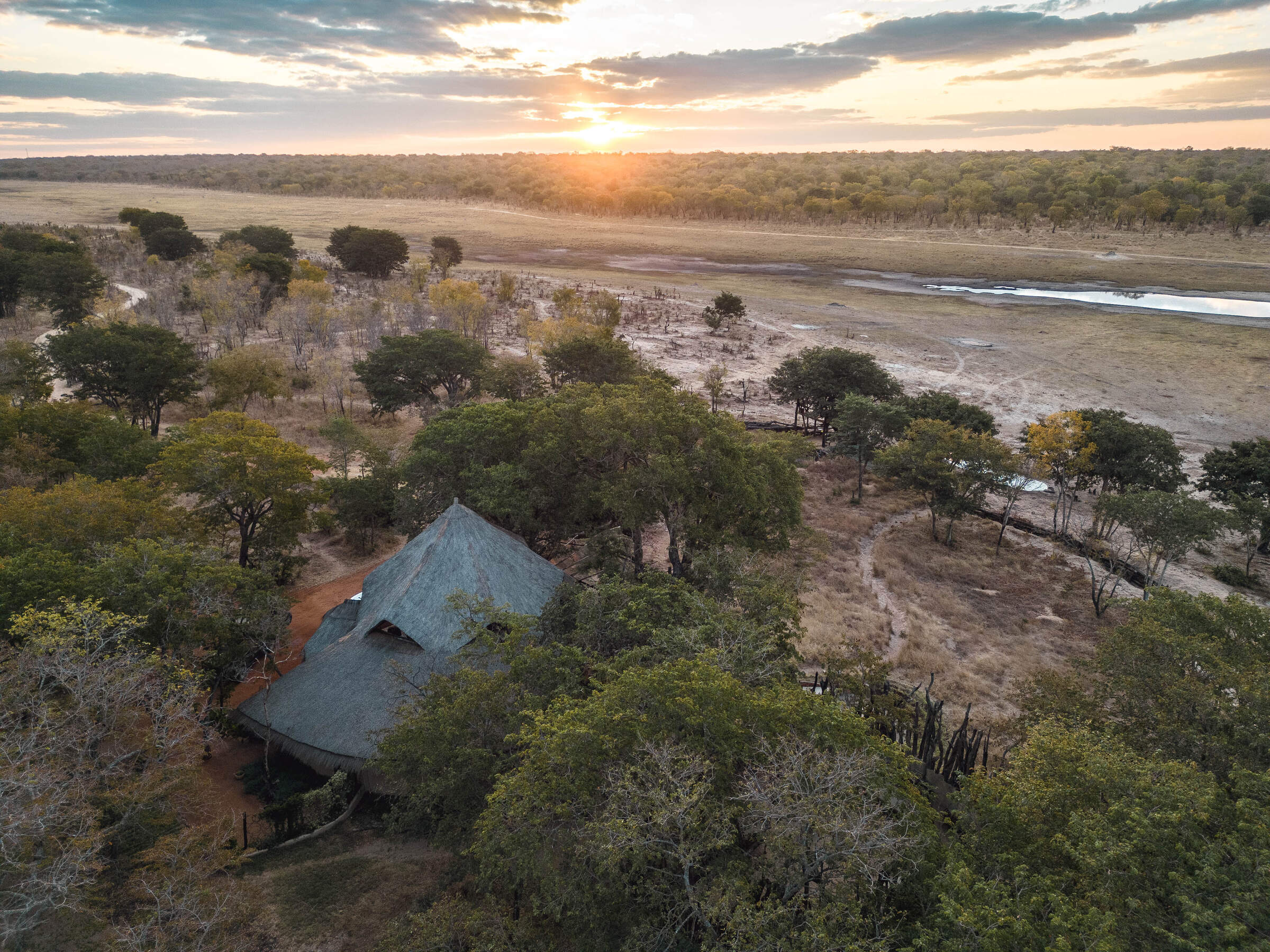
Sable Valley Lodge
Set on the 12km Dete Vlei, the recently upgraded and family-friendly Sable Valley sits in a private reserve within easy reach of Hwange National Park.
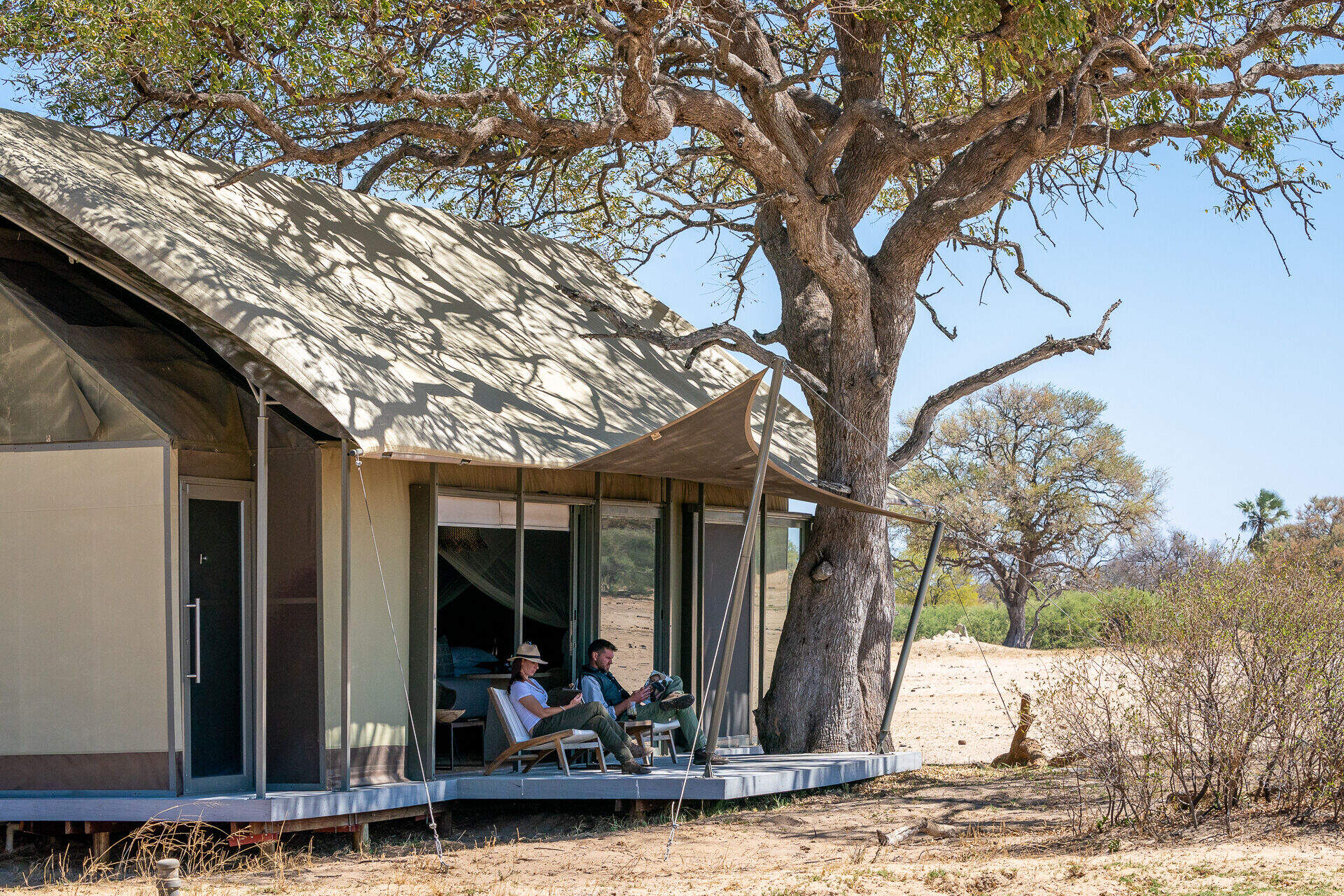
Linkwasha Camp
In its own private concession within Hwange National Park, Linkwasha offers excellent wildlife sightings and luxurious surroundings.
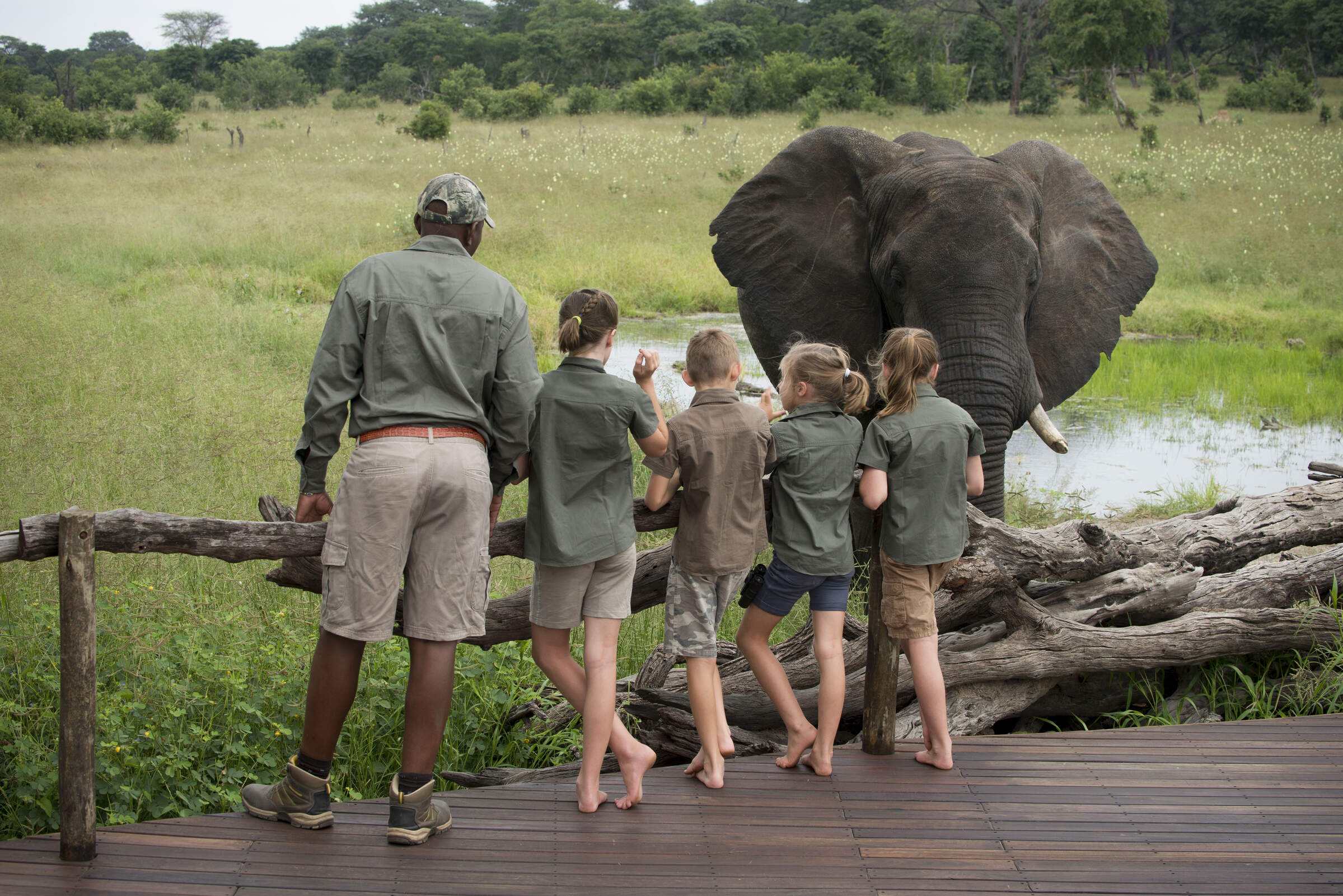
Somalisa Acacia
Somalisa Acacia is a family-friendly, yet remote and luxurious safari camp in Hwange National Park.
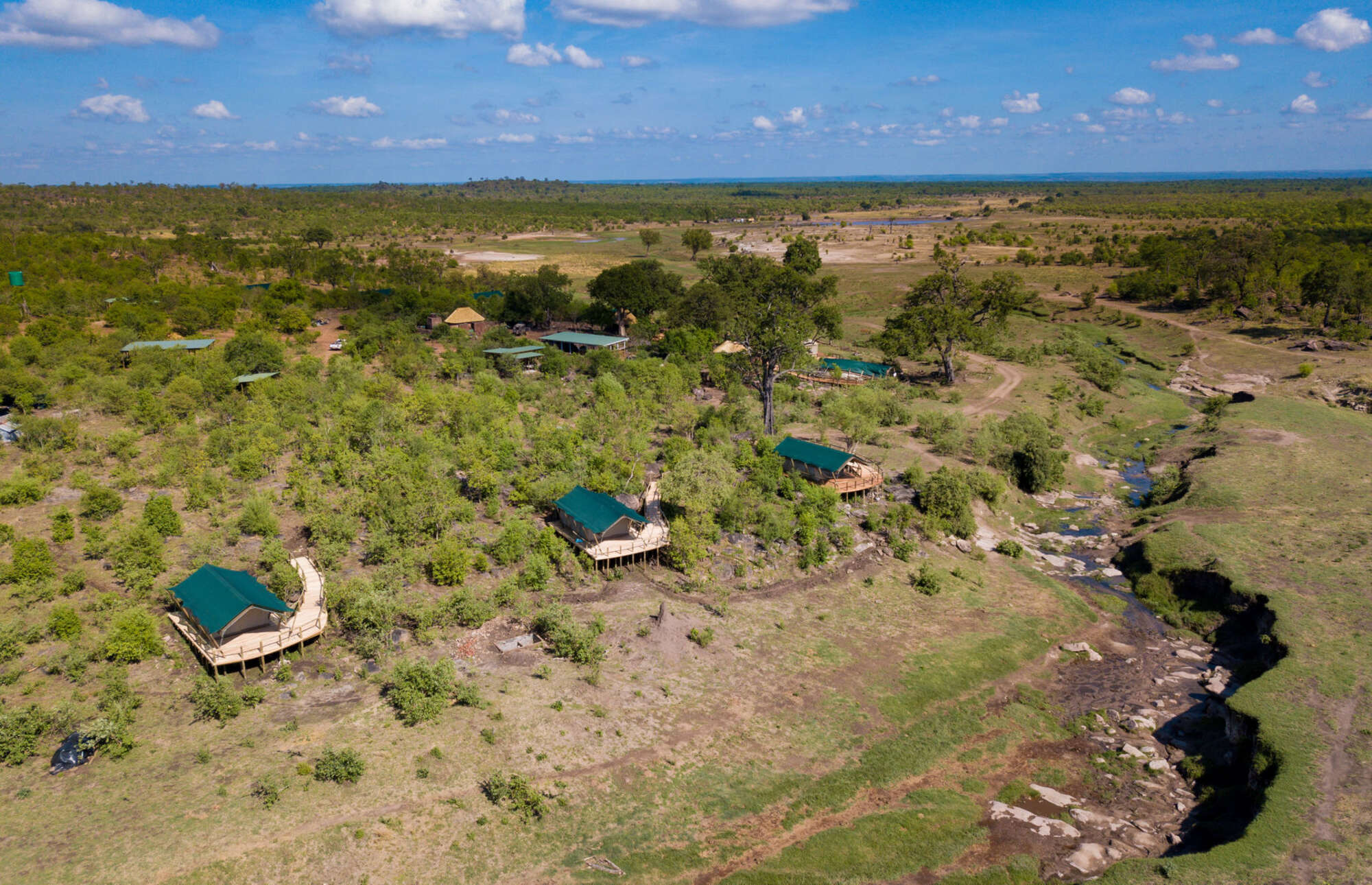
Deteema Springs Camp
In the remote north-west of Hwange National Park, Deteema Springs is a well-designed but unpretentious tented camp that offers good service and excellent wildlife potential.
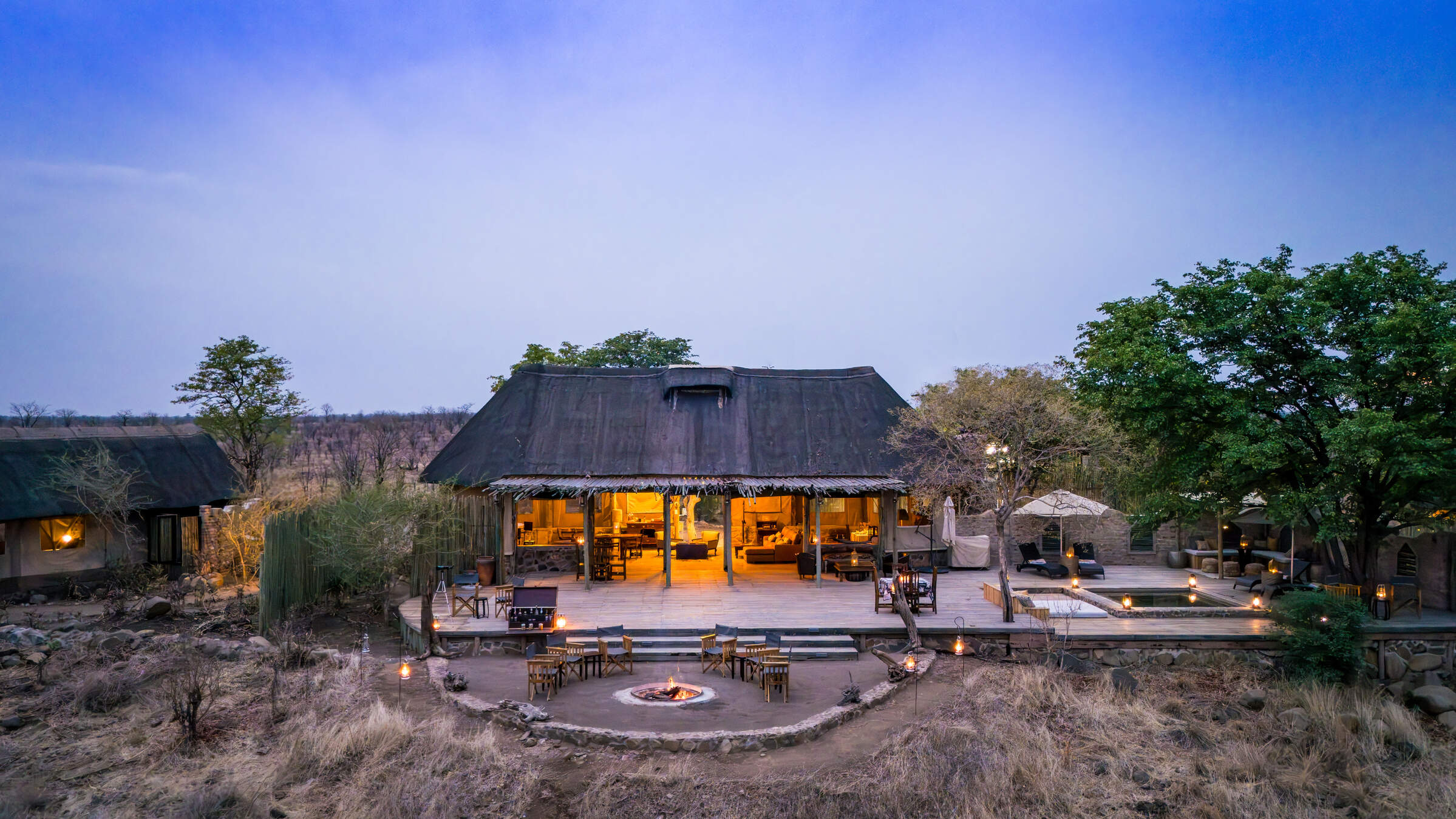
Daka Camp
One of the most remote camps in Hwange National Park, Daka Camp, like the smaller Daka Expeditions, sits almost on the border with Botswana.
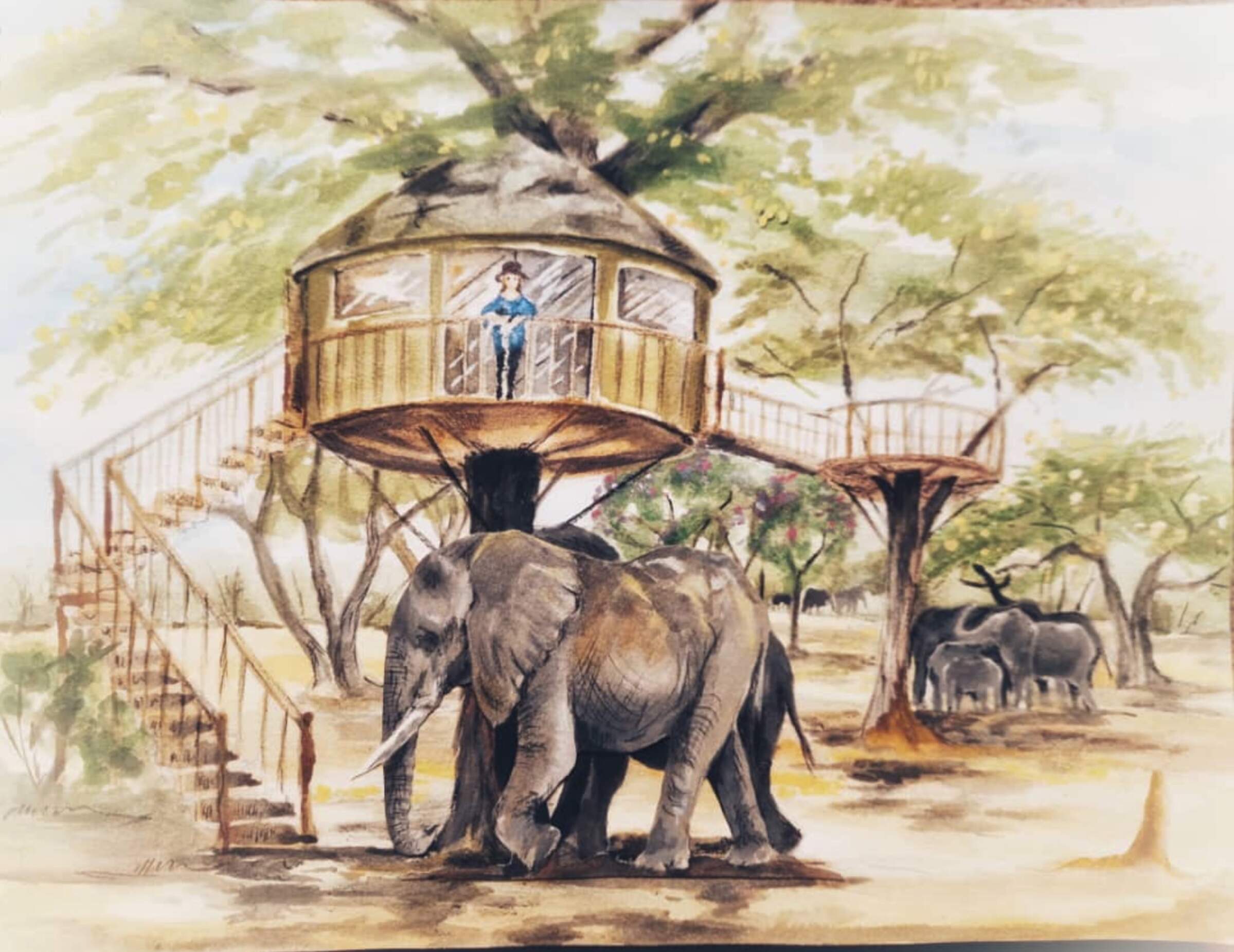
Tum Tum
The Tum Tum Treehouses are due to open in late 2025. Details on this exciting development are still scarce, so watch this space.
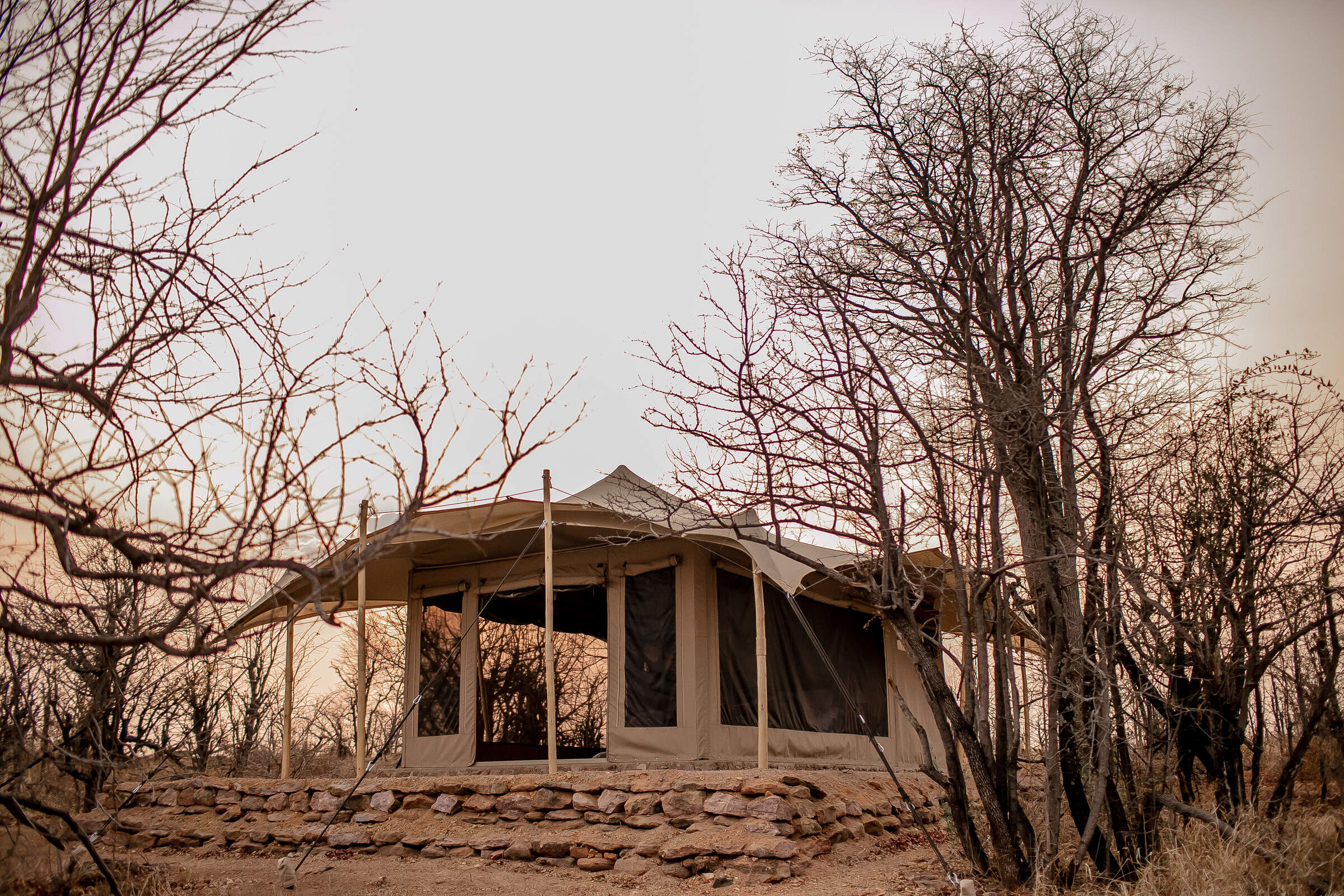
Camp Chitubu
Nestled in the rugged north of Hwange National Park, the unpretentious yet comfortable Camp Chitubu has a strong focus on excellent guiding.
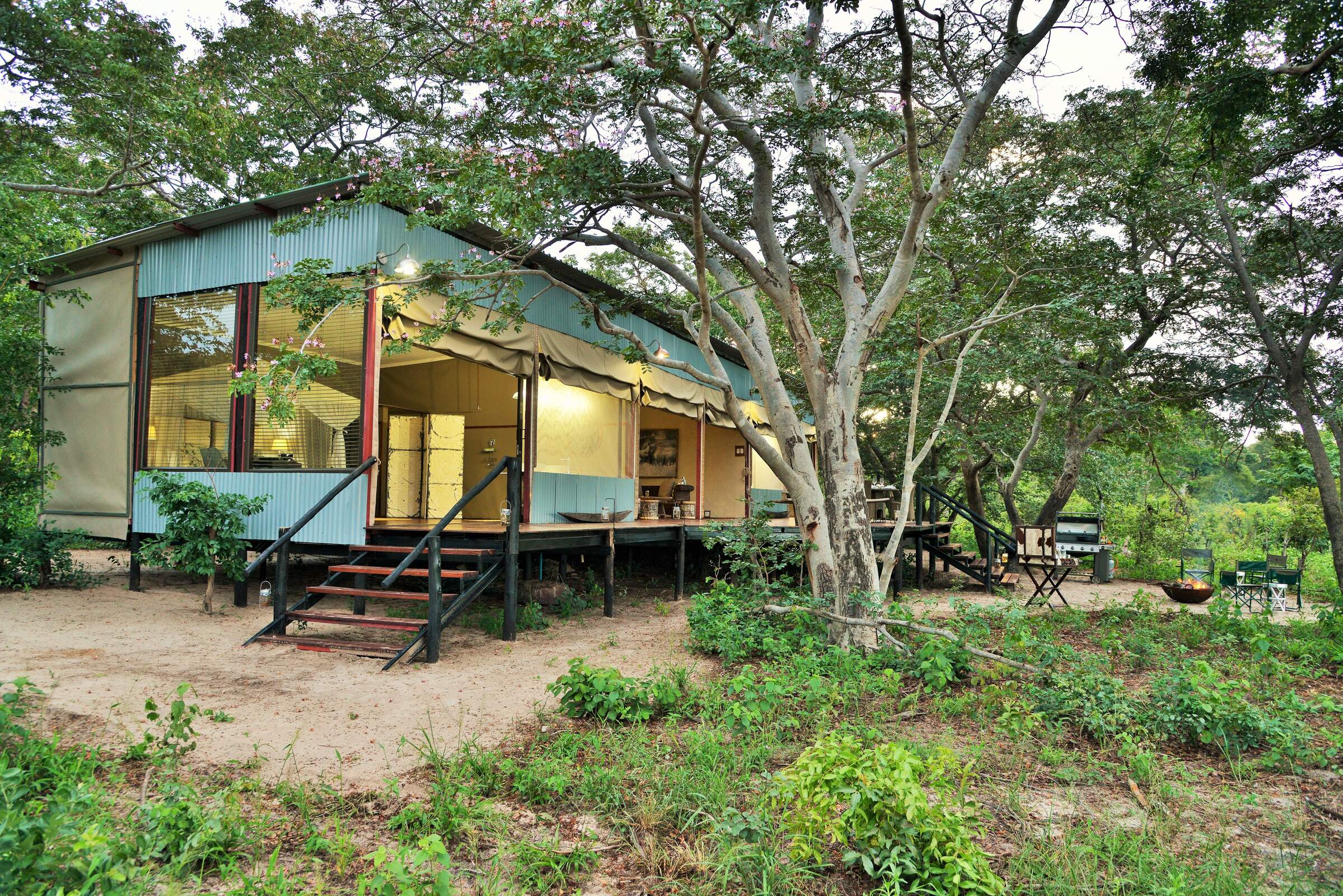
Khulu's Retreat
Just outside Hwange National Park, Khulu's Retreat is an exclusive private villa and is a great place to spoil yourself on a safari in Zimbabwe.
When to go to Hwange National Park
Our month by month guide: What it's like to visit Camelthorn in Hwange National Park
Jan
Feb
Mar
Apr
May
Jun
Jul
Aug
Sep
Oct
Nov
Dec
Zimbabwe in January
January falls in the middle of Zimbabwe’s rainy season and is the wettest month of the year. Heavy rainfall occurs most days, flooding seasonal rivers and waterholes, with the occasional sunny spell.
With the high levels of precipitation the wildlife in the national parks becomes widely dispersed, taking advantage of the abundance of food and water, and is easily hidden by the thick, green bush.
While sightings of larger animals are possible, and many species drop their young at this time, game viewing is often sparse. However, many migratory species of bird arrive in Zimbabwe making it a peak month for birding.
The rains create incredibly sticky mud in Mana Pools National Park, preventing access and causing camps to close for the season. The majority of the camps in other parks remain open, with low rates attracting a smattering of visitors.
- Peak of the rainy season: hot & humid with heavy rain most days
- Bush exceptionally thick and green, with poor game viewing
- Species such as impala drop their young
- All camps in Mana Pools closed
- Very few visitors, and low rates at open camps
Our view
A time to avoid if possible
Weather in January
Zimbabwe in February
February remains well within Zimbabwe’s rainy season. Although total rainfall drops, relatively short thunderstorms can still be expected most afternoons. On the plus side, there is a greater chance of some sunshine in-between.
Much of the country remains waterlogged, closing access to Mana Pools and severely restricting walking safaris in other parks. While game drives and canoeing remain an option, the abundance of water disperses animals, and thick grass can make it difficult to spot larger species, but birding remains excellent. Conversely, this is a great time of year to view the landscape, and is excellent for photographers. Sporadic cloud cover and clear air can make for some spectacular sunsets too, particularly over Lake Kariba and the Zambezi River where the reflections off the water add to the beauty.
- Generally wet with frequent thunderstorms & hot humid days
- Poor wildlife viewing due to dispersed animals & thick bush
- Clear air, green landscapes & exceptional sunsets
- All camps in Mana Pools closed
- Very few visitors & low rates at camps that are open
Our view
This is not a great time to visit
Weather in February
Zimbabwe in March
March is the final month of Zimbabwe’s rainy season, when the rains start to trail off and sunny days become the norm. However, some days the clouds can still build, breaking into thunderstorms in the afternoon.
Mana Pools remains closed throughout the month but the majority of camps in Hwange, Matusadona and Gonarezhou remain open. Here, the landscape is green and alive, with migrant species of birds taking advantage of the abundant insect life. Larger animals remain elusive though, and walking safaris remain restricted.
By this time of year, the rains have normally trickled down to the Zambezi River and the flow of water over the Victoria Falls starts to increase, but without kicking up too much spray to obscure the views.
- Last month of the rainy season: hot, humid days with occasional storms
- Lush vegetation means good birding, but poor game viewing
- Views of the Victoria Falls improve
- All camps in Mana Pools closed
- Open camps have few visitors & low rates
Our view
This is not a great time to visit
Weather in March
Zimbabwe in April
April marks the end of Zimbabwe’s rainy season and the end of summer. Clear skies are the norm, with just the occasional shower. Temperatures start to drop, failing to reach 30ºC most days and dropping down to around 10ºC at night.
As the rain fades the landscape starts to dry out. While the vegetation remains thick and green, the soil in Mana Pools dries enough for camps to open, and the only camps to remain closed are the most remote bushcamps in Hwange. Although viewing of larger animals remains tricky, the improved weather starts to draw back visitors, as do prices significantly below those in the peak season.
The Zambezi River and flow of water over the Victoria Falls is at its highest, although large amounts of spray diminish views of the waterfall itself.
- Transitional period, with much lower rainfall & falling temperatures
- Wildlife is still dispersed & hard to see, but sightings improving
- Views of the Victoria Falls often obscured by spray
- Camps in Mana Pools open
- Visitors start to return & camps increase their rates
Our view
A good time to visit, with pros & cons
Weather in April
Zimbabwe in May
The first month in the dry season, May is also Zimbabwe’s first month of winter. If the rains are particularly late in a given year, you may catch the odd shower, but you can expect clear and sunny days the majority of the time. While it’s warm in the daytime, temperatures drop to single digits at night, so bring a warm jumper and gloves for early morning drives.
With the rain having cleared the air, the sky is bright blue, and it’s the best time of year for photography.
Even the most remote camps in Zimbabwe are now open. With the lack of rainfall, vegetation dies back significantly, and seasonal rivers return to sand. Not only does this open up the possibility of walking safaris, but wildlife viewing becomes much more reliable.
- Start of the dry season, with milder days and cold nights
- Game viewing significantly improves as vegetation dies back
- Vegetation starts to turn from green to brown
- Best time for photography with crystal clear air
- Visitors start to return; all camps open & rates increasing
Our view
A very good time to visit
Weather in May
Zimbabwe in June
During June you can virtually be guaranteed of dry and sunny days, although temperatures continue to drop, and can get close to freezing at night in Hwange National Park. Jumpers, jackets and gloves are strongly recommended for early mornings and evenings.
The opportunities for wildlife viewing improve throughout the month as the landscape rapidly dries, and the animals start to gather on the banks of the Zambezi River and around Hwange’s waterholes.
Water levels in the Zambezi River start to drop, reducing the amount of spray kicked up at the Victoria Falls and greatly improving visibility, but still allowing a full curtain of water to cascade over the edge.
- Middle of winter, with night-time temperatures close to freezing
- Game viewing significantly improves throughout the month
- Views of the Victoria Falls are at their best
- Noticeable increase in visitor numbers
- Camps considerably more expensive
Our view
A very good time to visit
Weather in June
Zimbabwe in July
July sits in the middle of Zimbabwe’s dry season. Although it’s warm at midday, temperatures are generally cold and in Hwange it’s been known to drop below freezing at night, with the lower-altitude Mana Pools feeling a bit warmer.
With wildlife clustering around the few remaining waterholes, sparse vegetation, and some of the best views of the Victoria Falls, this is one of the most popular times to travel, with camps charging peak season rates to reflect this. That said, visitor numbers to the country in general remain low, and outside of the Victoria Falls it’s rare for any areas to feel crowded.
- Middle of the dry season with almost no chance of rain
- Clear sunny days, but very cold nights
- Wildlife viewing good; game drives and walking safaris unrestricted
- Views of the Victoria Falls at their best
- Camps charging peak season rates
Our view
A very good time to visit
Weather in July
Zimbabwe in August
While August is the end of winter and temperatures are starting to creep up, mornings and nights are still cold, and game drives in open vehicles can feel particularly chilly. Well into the dry season, the landscapes will have mostly transformed from green to brown and wildlife viewing in Zimbabwe’s national parks is approaching its best. Due to dust kicked up into the atmosphere and smoke from bush fires you may start to notice a haze on the horizon, but this doesn’t significantly impact photography.
August is one of the most expensive months, and the pleasant weather and decent game viewing attracts lots of visitors. While the national parks rarely feel crowded, Victoria Falls accommodation can sell out a year in advance.
- Warm, sunny days but cold mornings & nights; almost no chance of rain
- Wildlife viewing nearly at its best
- Landscape turns brown, & an atmospheric haze develops
- All camps charging peak season rates
Our view
Fantastic: the very best time to visit
Weather in August
Zimbabwe in September
Temperatures in September rarely drop below 15ºC, but are yet to reach the oppressive highs of summer. It will normally have been five months since the last drop of rain, so antelope and elephants cluster around whatever water remains, with predators never too far away.
The landscape is very brown, and the haze building on the horizon takes some of the colour out of the sky, so while animal subjects are plentiful, the background is not ideal for photography.
The combination of incredible wildlife viewing, hot and sunny weather, and cheaper flights outside of the school holidays make this the most popular time of year to travel, and availability at the camps can become limited up to a year in advance.
- The best month for weather, with a pleasantly warm temperature range
- One of the best months for game viewing
- Victoria Falls starting to dry but still impressive on Zimbabwean side
- All camps are charging peak season rates
- Most popular time to travel, & space can be limited
Our view
Fantastic: the very best time to visit
Weather in September
Zimbabwe in October
October is the last month of the dry season with little chance of rain but building humidity. While the higher elevation of Hwange National Park limits temperatures to the 30s Celsius, they can easily top 40ºC in Mana Pools.
With little vegetation or water, wildlife is drawn to the few remaining water sources and viewing is at its best; visitors who brave the heat can be rewarded with some exceptional sightings, although haze in the air diminishes photos. Maximum visibility and dense wildlife concentrations can also make for very rewarding walking safaris, although the heat can make them uncomfortable.
Water levels in the Zambezi at the Victoria Falls drop significantly, and large stretches of the waterfall are a dry cliff-face – although it never dries completely. Camp rates remain at their peak, but visitor numbers drop as people avoid the heat.
- Last month of the dry season; very hot with building humidity
- Wildlife viewing at its very best
- Dust & smoke in the air diminish photographic opportunities
- Victoria Falls starting to look very dry
- Camp rates remain at their peak
Our view
A very good time to visit
Weather in October
Zimbabwe in November
November is a transitionary period, with high temperatures and humidity. While they can’t be predicted with any precision, the first rains normally arrive halfway through the month, in the form of thunderstorms lasting a few hours each day.
Early November is a popular time to travel as the camps drop their rates, so if you’re lucky you can get peak-season game viewing at low-season rates. This is a gamble though as if the rains do arrive, animals are no longer limited to a few dangerous waterholes and will disperse into the bush. While all the camps in Mana Pools intend to remain open, the rains can make the airstrips unusable so you may find yourself moved to a different park, a risk that increases through the month.
- Typically the start of the rains in Zimbabwe
- Temperatures & humidity levels remain high
- Wildlife viewing rapidly diminishes as the rains arrive
- Camps remain open, but risk early closure in Mana Pools
- Much cheaper time to travel as camps drop their rates
Our view
A good time to visit, with pros & cons
Weather in November
Zimbabwe in December
By December the rainy season has begun in earnest; this is one of the wettest months in Zimbabwe, with heavy thunderstorms most afternoons and occasionally continuous rain for a couple of days. While temperatures start to cool down the high levels of humidity can make the heat feel more oppressive.
With the rains comes an explosion of green growth, and the dust and smoke are washed out of the air. The resulting scenery – with the occasional bright blue skies – can be fantastic for photographers. Thick vegetation and plentiful water makes viewing of larger animals tricky, but with migratory species arriving the birding is at its best.
All camps in Mana Pools and the remote Hwange camps close, with those remaining open charging their lowest rates.
- One of the wettest months in Zimbabwe
- High temperatures & levels of humidity
- Wildlife viewing poor, but birding good
- Lush green landscapes & clear air; great for landscape photography
- All camps in Mana Pools closed
Our view
This is not a great time to visit
Weather in December

Looking for inspiration on where to travel next?
Visit our trip chooser to explore your options and find inspiration for your perfect African adventure
Inspire me